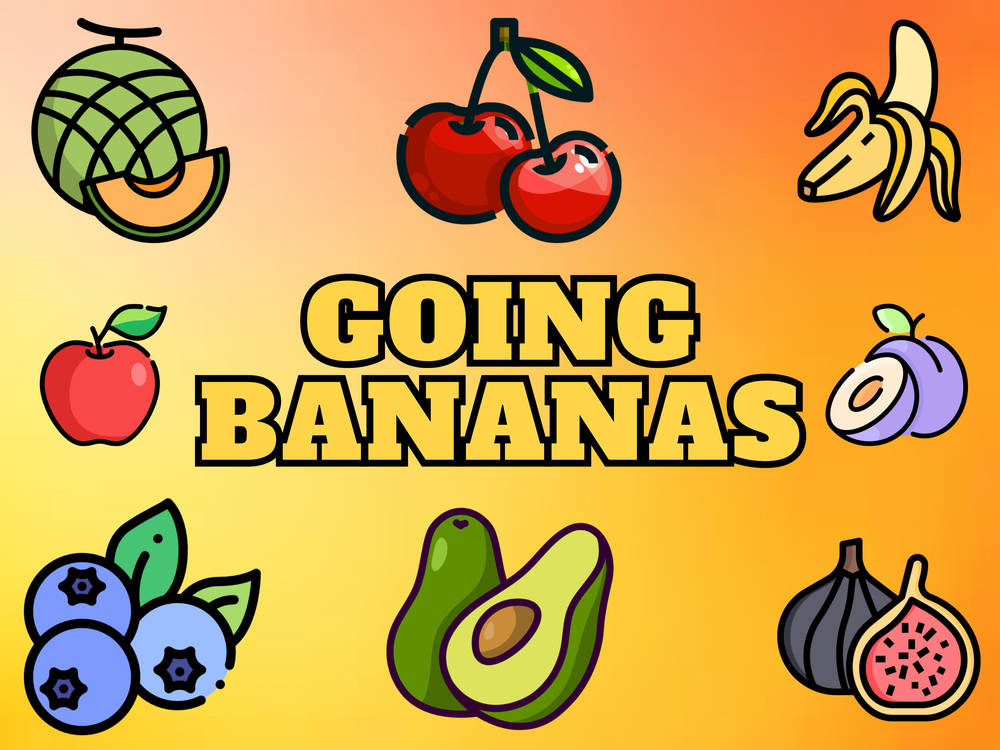
Introduction
I've been wanting to break down different foods in many common food groups for a while now, and now is finally time to get a little fruity. Everyone knows they should eat their fruits and vegetable, but why? While not as quite as healthy as veggies, fruits are still a healthy snack or side, being good sources of fiber, vitamins, minerals, natural sugar, and water. Fruit really is nature's candy, giving you a quick energy boost to hold you over until the next meal if needed, while still packing some nutrition with delicious flavor.
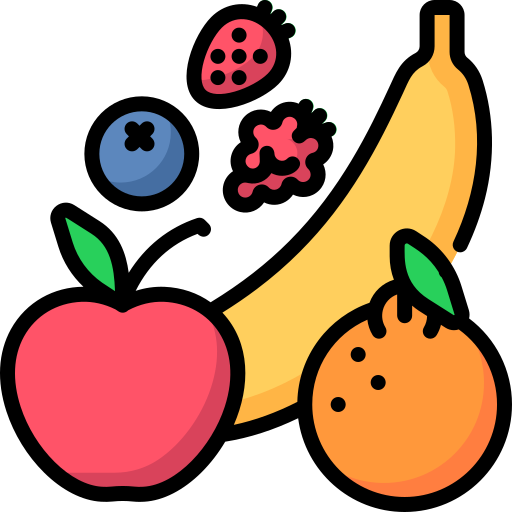

Other Posts in this Series

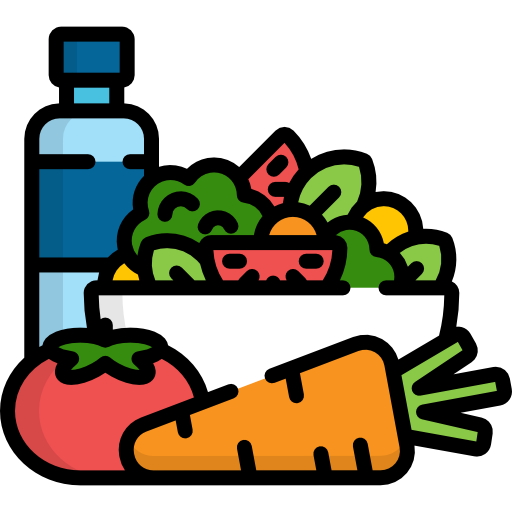
Contents
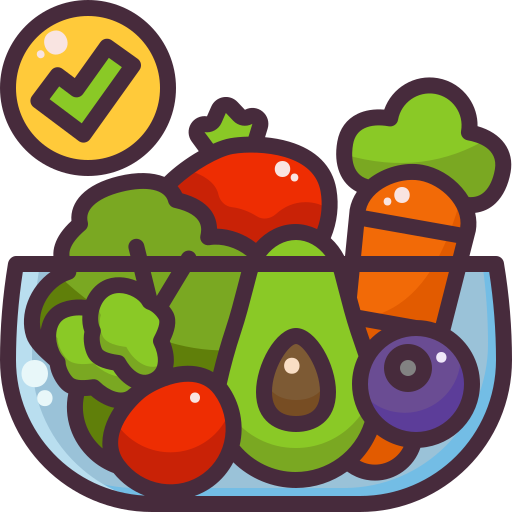

Apples are possibly the poster child for the word 'fruit'. They taste great, require no preparation, can be taken on the go, and last for months in the fridge. Forget about bananas and berries going bad if you look at them the wrong way; the humble apple will be fine in that bottom drawer until next quarter.
You average apple clocks in at under 100 calories with 4 g of fiber. Apples are a decent source of both vitamin B6 and vitamin C. The skins (which I hope you're eating) contain beneficial phytochemicals due to their red color, aiding your body as an antioxidant by decreasing inflammation and combating oxadative stress. An apple does contain 19 g of (naturally occuring) sugar, meaning it's fairly high sugar for a fruit. Not necessarily a bad thing from whole food sources, but something to keep in mind.
There's no shortage of uses for apples. You can eat them plain, or with peanut butter or goat cheese. You can add them to your oatmeal or yogurt (either raw or cooked). Then there's applesauce. Unsweetened applesauce is a great way to keep baked goods moist and add subtle sweetness without the need for added fat (butter or oil) or added sugar. Below are some great recipes using both apples and applesauce:
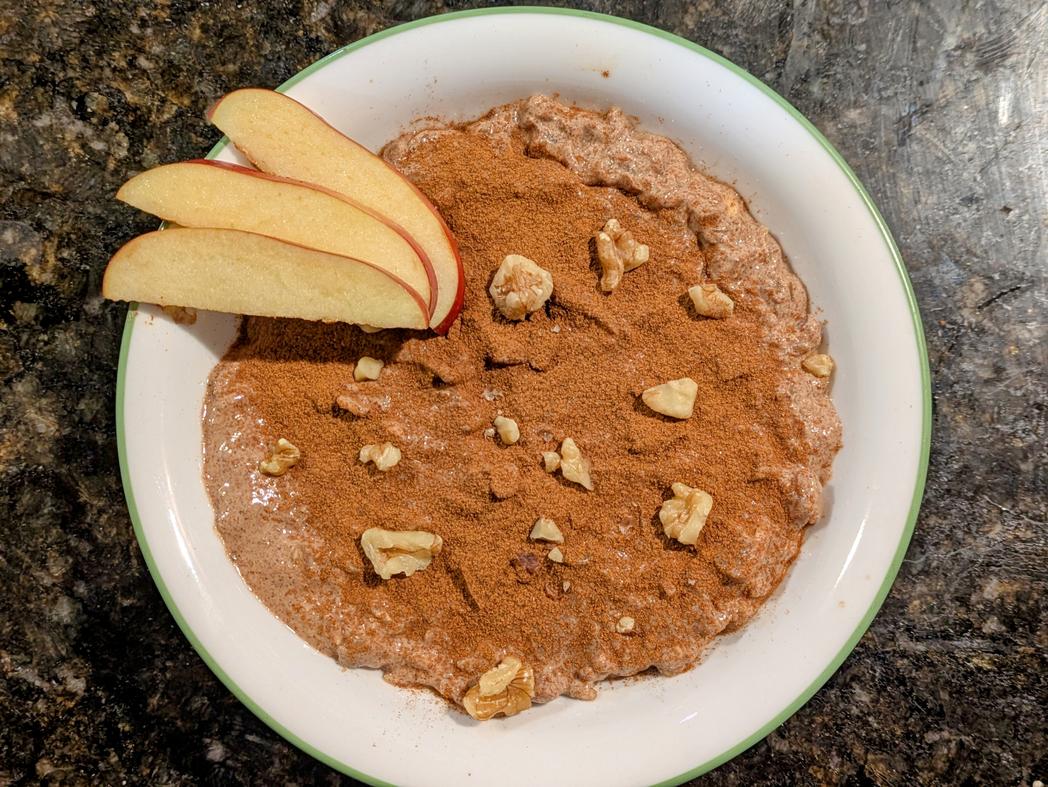
Serving Size: 1 apple (157 g)

Apricots are nice little stone fruits with a decent source of fiber and, surprisingly, protein? While not much, 2 g of protein for 70 calories isn't too shabby if you were expecting zero. Just stay away from dried apricots. Not because of added sugar (they're typically unsweetened); they just taste nasty.
Compared to apples, apricots have a more noticable micronutrient profile, being a good source of vitamin A and vitamin C. Their beta-carotene content contributes to skin and eye health, whereas vitamin C is a potent antioxidant. Apricots are also nice sources of copper and potassium. Did you know that apricots have more potassium than bananas? Well now you do.
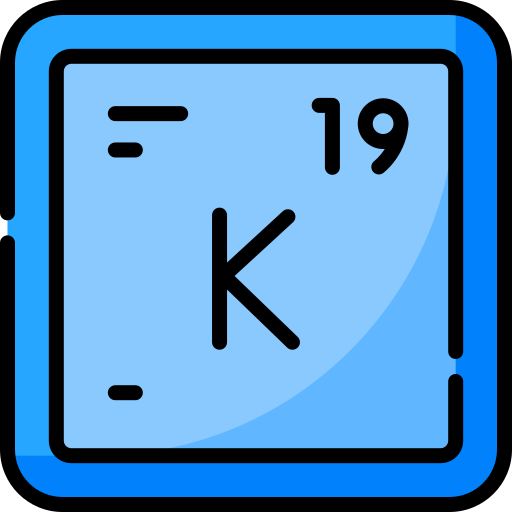
Serving Size: 1 apricot (35 g)
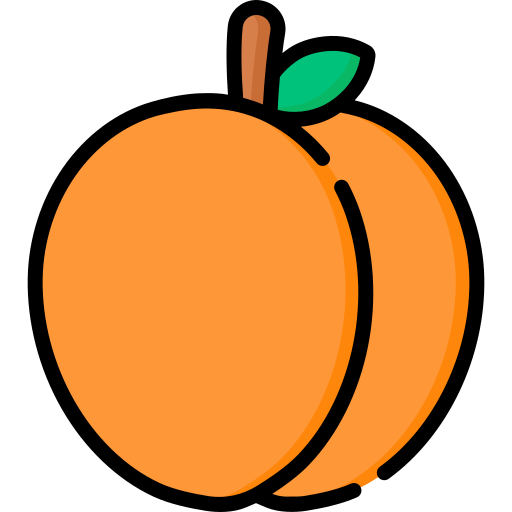
Yes, avocados are a fruit. They don't have a typical fruit nutritional profile though. Avocados are notably the highest fat fruit on this list, with one of the highest fiber contents and least net carbs. Avocados contain a notable amount of potassium, comparable to that of bananas. They're also a rich source of folate, vitamin E, vitamin K, and copper.
Their high fiber and healthy fat contents promote satiety, keeping you feeling full for longer, as well as blunting blood sugar spikes. The monounsaturated fats found in avocados are beneficial for heart and brain health, vitamin E promotes skin health, and folate aids in the formation of red blood cells. They are quite caloric because they're high in fat, which is something to keep in mind.
No one just eats an avocado straight up though (I hope). Avocados are best at making things creamy for (ironically) less calories, substituting calorically dense ingredients like mayo, oil, and sour cream. Sliced on a sandwich, mashed into a salad, or prepared into guac, avocados are the perfect topping to nearly any meal. Below are some great used for avocados:
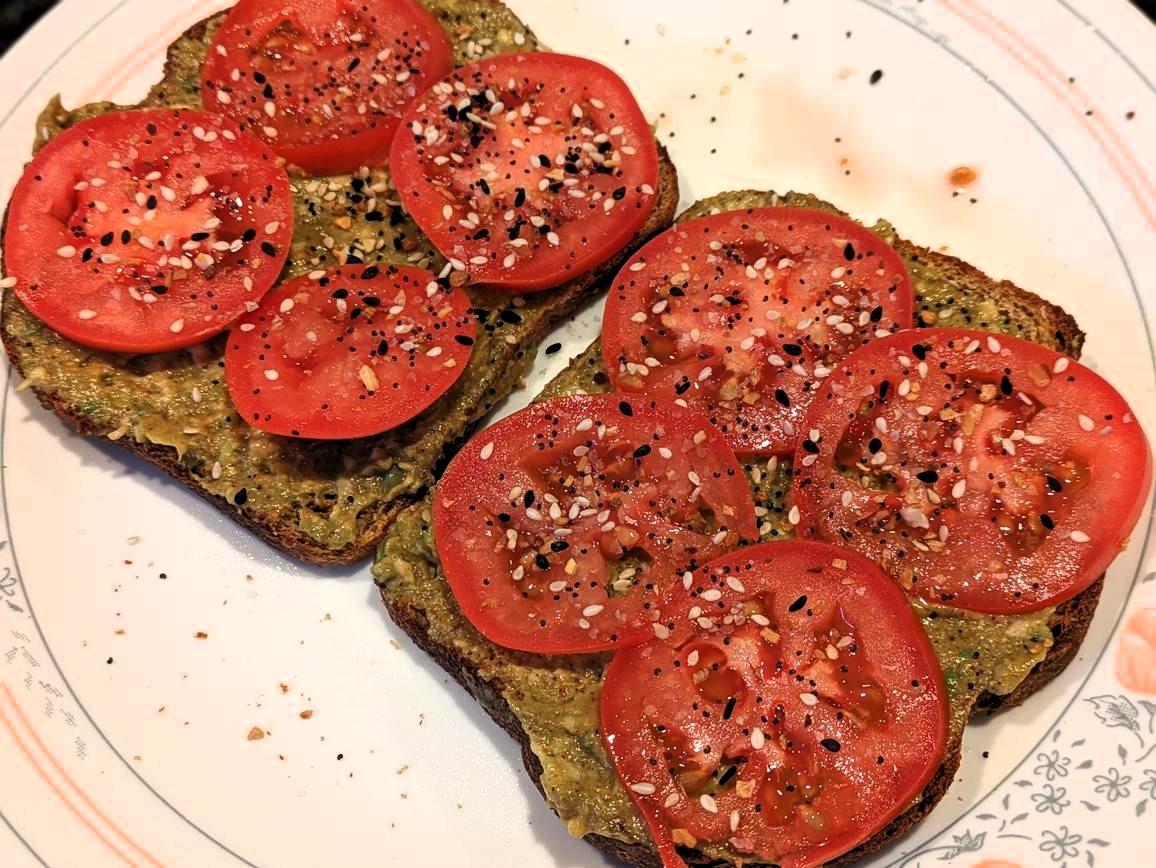
Serving Size: 1 avocado (136 g)
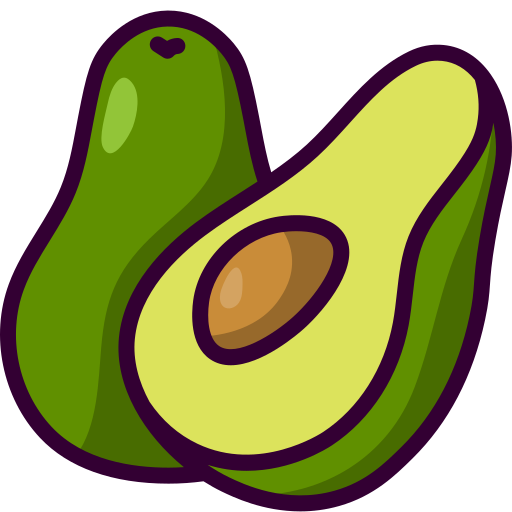
Outside of apples, bananas are probably the first thing that come to mind when you think of the word 'fruit'. They're also probably the first food to come to mind when you think of potassium. While yes, bananas are a good source of potassium, aiding in electrolyte balance, hydration, muscle and nerve function, and kidney health, they're far from the best source. Avocados, apricots, guava, hemp seeds, black beans, and potatoes are all comparable or better sources of potassium. Outside of potassium though, bananas pack quite a bit of vitamin B6, vitamin C, copper, and manganese. There's also 3 g of fiber in your average banana.
Rarely do I ever just eat a banana as intended; sometimes I'll eat them with peanut butter. But most of the time, I prefer to bake with them, mashing them into my breakfast or baked goods. Bananas are naturally sweet, taste great, and keep baked goods moist without the need for adding unhealthy fats, like butter or vegetable oil. Who doesn't like banana bread or banana pancakes? Check out some great banana based recipes below:

Serving Size: 1 banana (110 g)

Blackberries are our first berry on the list, with blueberries, raspberries, and strawberries soon to follow. Blackberries are one of the lowest sugar fruits, as they contain more fiber (7.6 g) than sugar (7.0 g) in 1 cup (144 g), one of the few frutis to make this claim. Their high fiber content aids in promoting healthy digestion, and their dark purple color is a rich source of antioxidants known as anthocyanins, promoting healthier brain and heart health.
Blackberries are also one of the highest sources of vitamin C, a powerful antioxidant and immune supporting micronutrient. Additionally, blackberries are a good source of vitamin B5, folate, vitamin E, vitamin K, copper, and manganese. They're the perfect combination of sweet and tart, and go great in jams, on salads, or as a topping to oatmeal or yogurt.

Serving Size: 1 cup (144 g)
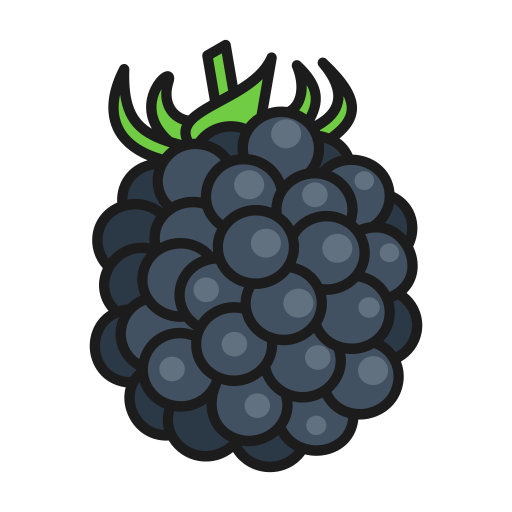
Most people know blueberries for being an antioxidant powerhouse, and they're not wrong. The dark color of blueberries (which ironically isn't really blue) are full of phytochemicals known as anthocyanins, which are beneficial for reducing inflammation, as well as supporting heart and brain health. Blueberries are also a good source of fiber, vitamin K, and manganese, with a moderate amount of natural sugars.
Blueberries are my personal favorite berry (sorry strawberries, raspberries, and blackberries). They're the perfect size, not requiring any dicing to put in a salad or bowl of oatmeal, and also not too expensive (especially when frozen). Check out some recipes below for some delicious used of this super berry:

Serving Size: 1 cup (140 g)
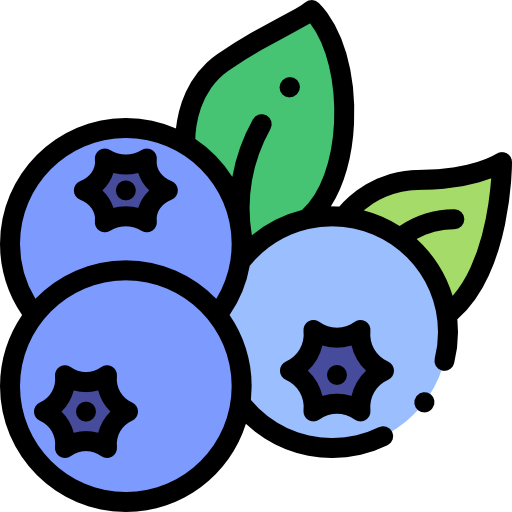
Boysenberries are a cross between a blackberry, raspberry, and loganberry, giving them a rich, tangy-sweet flavor and deep purple hue. Like other dark berries, they are an excellent source of fiber, as well as folate. One cup (132 g) of boysenberries contains about 9 g of fiber, 87 calories, and 12 g of net carbs. They're also notable for their high levels of anthocyanins and other antioxidants, which support heart health, help combat inflammation, and may play a role in brain health.

Serving Size: 1 cup (132 g)

Cantaloupe is a melon, like honeydew and watermelon. It's pretty low calorie due to its high water content, as 1 cup (156 g) contains only 53 calories with 1 g of fiber and 12 g of natural sugars. Cantaloupe is surprisingly pretty high in vitamin A, vitamin C, and potassium, benefitting skin, eye, and immune health.

Serving Size: 1 cup (156 g)

Cherries are not berries; rather, they're considered a stone fruit (does that mean a cherry is closer to an apricot than a blueberry?). If you can get past the annoyance of eating around the pits, cherries are a great addition to your diet. Cherries are quite a decent source of fiber, vitamin C, copper, and potassium. Although not a berry, cherries are nutritionally pretty similar to them. They're high in anthocyanins due to their dark red hue, making them great at combatting inflammation. Cherries also contain some naturally occuring melatonin, helping to support sleep. They are fairly high in sugar though, containing 20 g in 1 cup (154 g).

Serving Size: 1 cup (154 g)
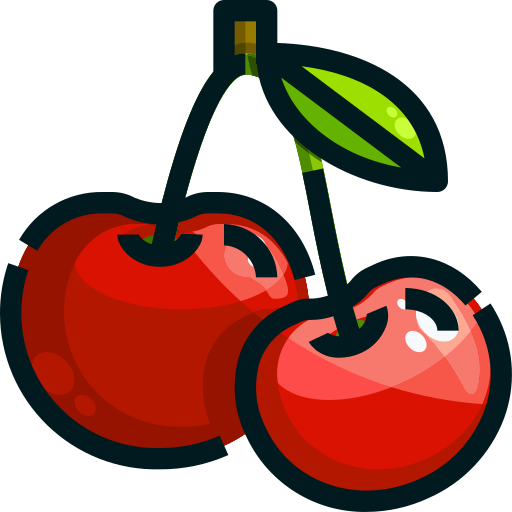
Clementines are a type of mandarin orange, and while they’re technically a hybrid between a sweet orange and a willowleaf mandarin, most people just think of them as the easy-to-peel snack orange. Their small size and naturally segmented flesh make them one of the most convenient fruits to eat on the go—no knife required. Clementines are an excellent source of vitamin C and provide a decent amount of fiber, folate, and potassium. Like other citrus fruits, they’re rich in flavonoids, which can help support immune health and reduce inflammation. They’re a little lower in sugar compared to many other fruits, with about 7 g per fruit (74 g).

Serving Size: 1 medium (74 g)
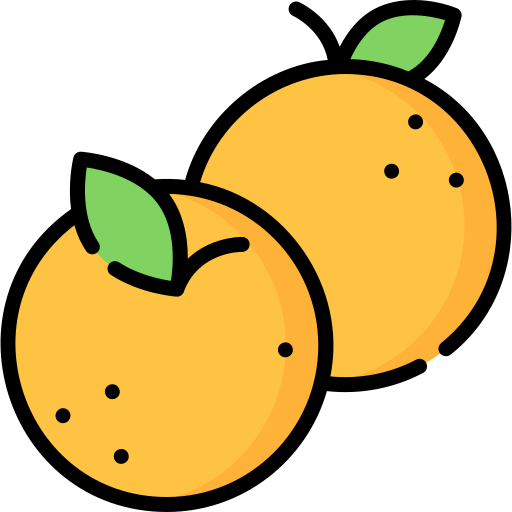
While coconut is technically a fruit and not a nut, it's more similar to nuts due to its high fat content, most of which being saturated fat. Per ounce, coconut is lower in fat than most items on this list, while also being midly sweet and containing a decent bit of fiber. Under the hood, coconut is a decent source of both copper and manganese, though it is lacking in most micronutrients when compared to other nuts.
If fat is having a redemption arch, it's coconut that's leading the charge. The saturated fat content in coconut is comprised of mainly Medium Chain Triglycerides (MCTs), which are shown to be burned for energy, similar to carbs, while not spiking blood sugar or stimulating insulin secretion. There's a reason why coconut oil is often used as a healthier butter. It may have the same fat and calories, but having the same calories doens't make them equivalent.
While I've never had a whole coconut (yet), there are a plethora of coconut products on the market. Some good for you, (like coconut flour and unsweetened coconut flakes), some in the middle (like coconut oil), and some bad for you (like sweetened coconut flakes and coconut sugar). You can use unsweetened coconut flakes in my 7-Layer Bars and No Bake Energy Bites, or coconut flour in my No Bake Cheesecake Bars and Gluten and Grain Free Coconut Bread, and even coconut oil in my Sugar Free Apple Pie and Sugar Free Chocolate Bar. Coconut is a very versatile ingredient; you can even turn it into a 'nut' butter substitute if you blend unsweetened coconut flakes.

Serving Size: 1 oz (28 g)

Cranberries are a low sugar, high fiber, and low calorie fruit. They're a good source of vitamins C and E, as well as the mineral manganese. Their red color is a rich source of proanthocyanidins, helping to fight inflammation and protect against UTIs.
Cranberries are an incredibly tart fruit that I personally like, but most people despise. There's a reason why dried cranberries are pumped full of added sugar. Store-bought dried cranberries contain a whopping 26 g of added sugar in a 1/4 cup (40 g) serving. Not only is that a small serving of cranberries, but they're over half added sugar by weight. 26 g of sugar is more than 2 tablespoons, making them a candy. You wouldn't be putting gummy bears or jelly beans on your salad, so why put dried cranberries?
You can sometimes buy unsweetened dried cranberries (for significantly more money), or you can make your own. Same goes for cranberry sauce, most are filled with more added sugar than your average dessert. Instead, make my Unsweetened Dried Cranberries or Sugar Free Cranberry Sauce.
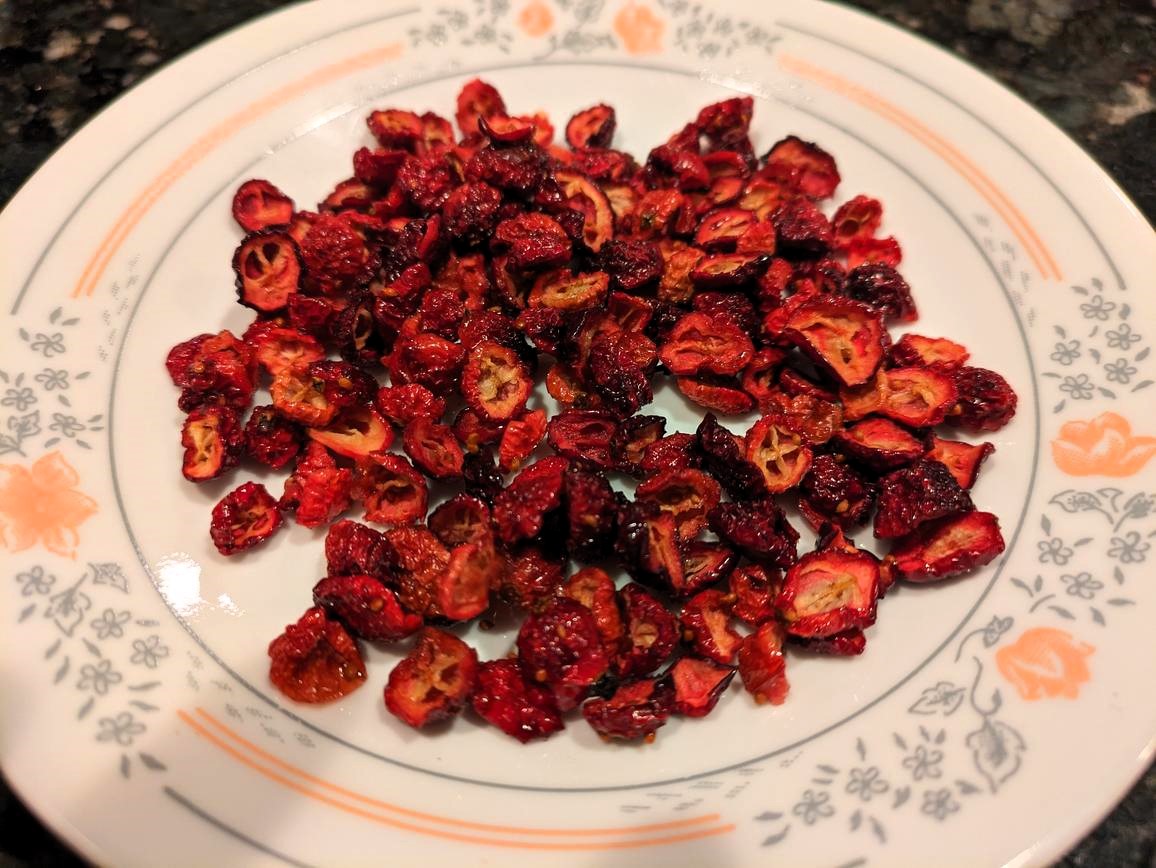
Serving Size: 1 cup (100 g)
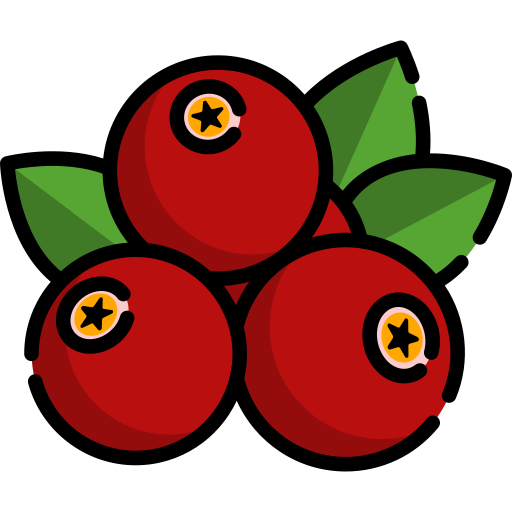
Have you ever had a date before? Oh, you haven't; you must be lonely. Dates are a high calorie and high sugar dried fruit. They're basically a giant raisin, and are pretty similar to dried figs. Dates are also a decent source of fiber. There are typically 2 main forms of dates: the smaller deglet noor, and the larger medjool. Note that 3 deglet noor dates is roughly equivalent to 1 medjool date.
While not the most nutritious fruit out there, dates are still fantastic. Portion control is a must, but dates are by no means 'unhealthy'. They're basically nature's caramel candy. Being very sweet with a delicious flavor, dates can be easily substituted for refined sugars to make added sugar free desserts, snacks, and sauces. Below are some great uses for dates:
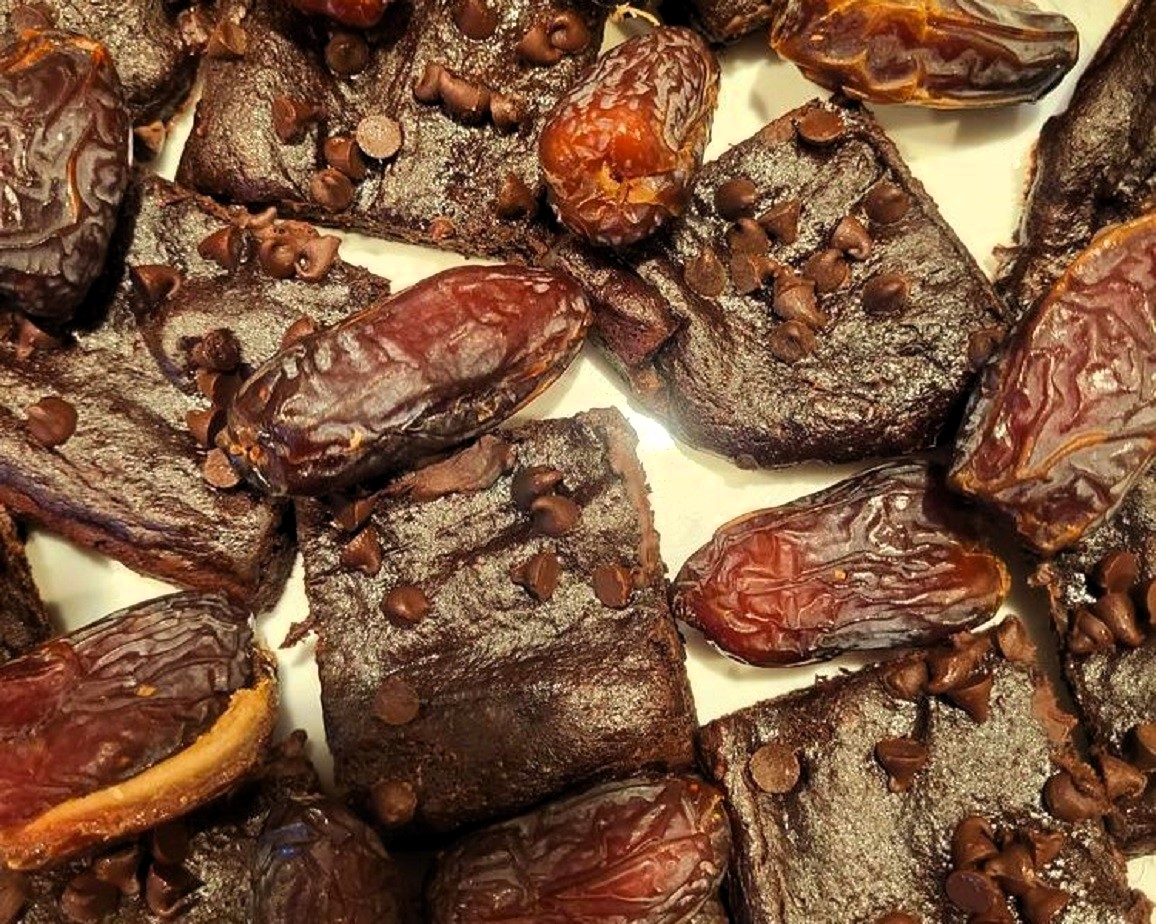
Serving Size: 6 Deglet Noor
2 Medjool (40 g)
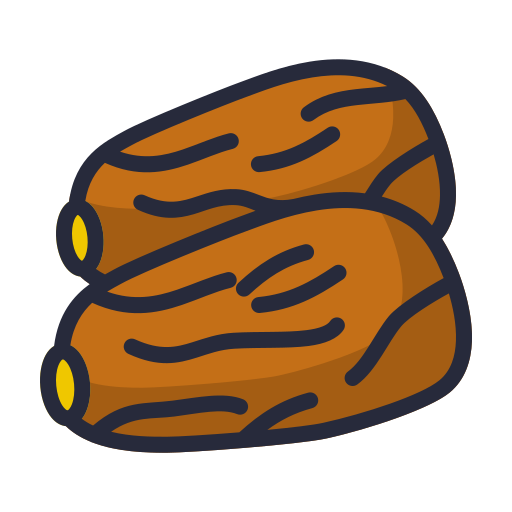
Dried figs are very simimlar to dates, in that they're both unsweetened dried fruits that are quite high in natural sugar and calories, while supplying a moderate amount of fiber. Dried figs also supply some copper, which aids in the formation of red blood cells. As with all dried fruit, portion control is very much needed, as it is very easy to over eat without all the water that's typically found in fruits.
Figs are also the traditional fruit used in cuccidati cookies, which are Sicilian fig cookies often served on Christmas (picture a homemade Fig Newton). I have a recipe for them using dates instead, but figs would totally work as well; check out my Date Cuccidati Cookies, wich are free of added sugar and gluten. Or, for another traditional snack using figs, you can make Spanish Pan de Higo, which are essentially Larabars. Just blend together dried fruit, nuts, and any flavorings, like cinnamon or rum extract.

Serving Size: 1/4 cup (40 g)
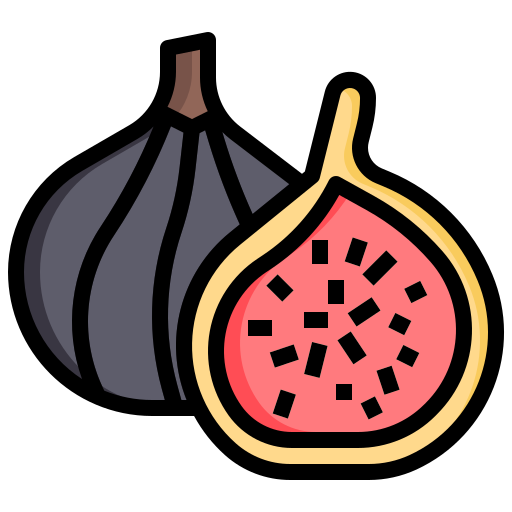
Fresh figs carry all the benefits of dried figs, but without all the water removed. The inclusion of water makes these fruits much more filling. The same 100 calorie serving is about 1 cup (135 g) of fresh figs, as compared to 1/4 cup (40 g) of dried figs. Other than the water content, dried and fresh figs are essentially the same nutritionally.
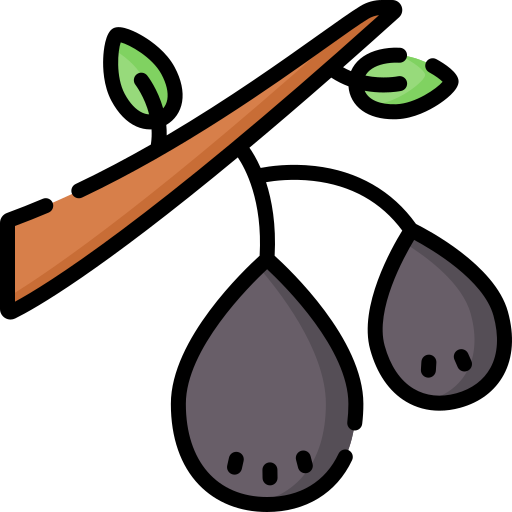
Serving Size: 1 cup (150 g)
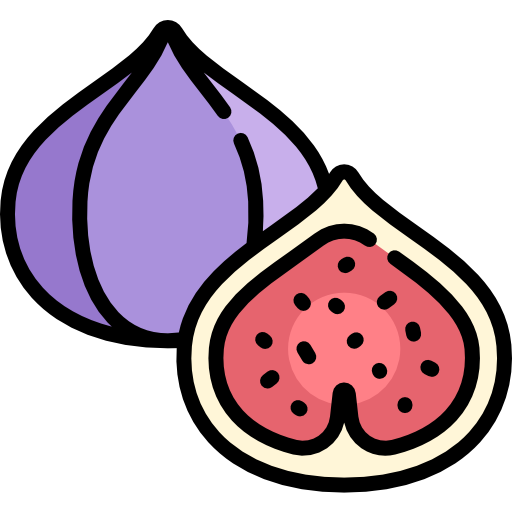
Grapes are technically berries; the more you know. They contain quite a bit of fiber, and are very sweet due to their high content of natural sugar. Grapes also contain some vitamin K and copper. Red grapes are likely 'better' for you than green, as red grapes are higher in the antioxidant resveratrol. Resveratrol is why people claim red wine is good for you. Or you could ditch the alcohol and eat the whole grape.
I don't have any recipes calling for grapes specifically, but that's because they make a great snack on their own. Even better though is frozen grapes. Just freeze grapes in an airtight container overnight, and eat straight from the freezer the next day. It's the perfect sweet and sour refreshing candy. You can also make homemade fruit syrup using grapes (or any other fruit), like I did in with Homemade Fruit Syrup, where I boiled down grape juice until I ended up with a syrup that I could use for baking, like I would honey or maple syrup.

Serving Size: 1 cup (150 g)
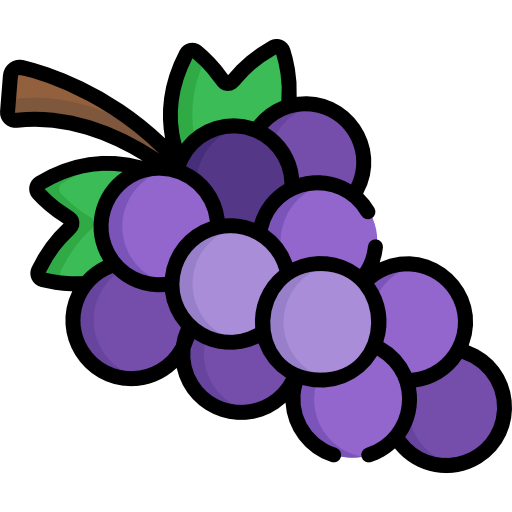
Grapefruit are in no way related to grapes, so it's odd that they share a similar name. Nevertheless, grapefruit are known for their vitamin C content, helping to enhance immunity. Additionally, grapefruit is a good source of vitamin A, particularly lycopene, which is plays a role in eye and skin health. They contain a moderate amount of fiber, and sugar, are relatively low calorie, and have a nice sweet and sour taste. Just please don't add any sugar on top of it, okay?
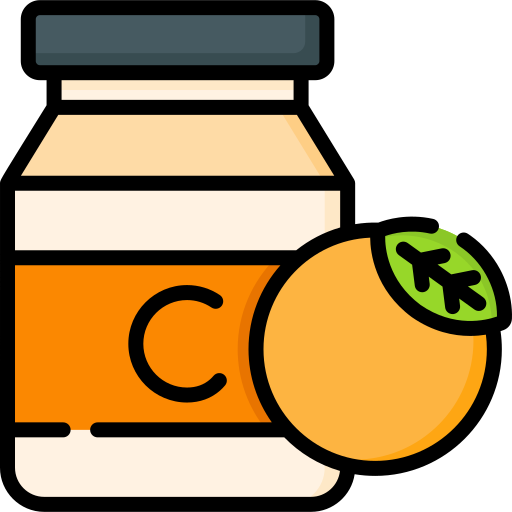
Serving Size: 1 cup (154 g)
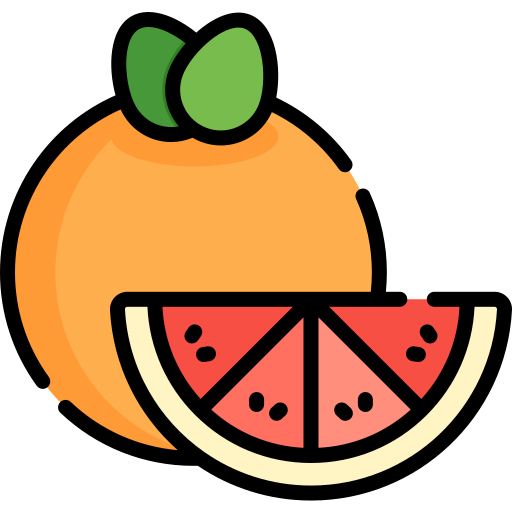
What is the highest source of vitamin C? If you guesses oranges, then you'd be wrong. It's actually guava, with a whopping 419 % of the RDA in 1 cup (165 g). Thats for only 112 calories, with also an astounding 9 g of fiber and somehow 4 g of protein. Guava is also a good source of lycopene, niacin, vitamin B6, folate, copper, and magnesium. Oh, and guavas have the most potassium of any fruit, 1.5 times that of bananas. What can't this fruit do? I guess be available in my grocery store...

Serving Size: 1 cup (55 g)
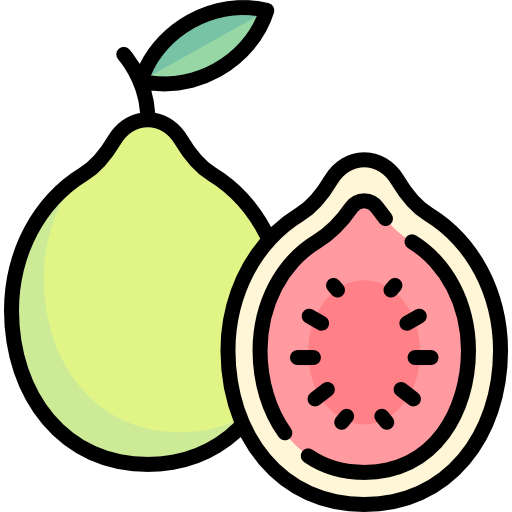
Honeydew is the green melon; cantaloupe is the orange one (I always mix them up). They're pretty similar though, containing comparable amounts of calories, sugar, and fiber. Cantaloupe contains significantly lower amounts of both vitamin A and vitamin C, however. It's high water content makes it a filling and refreshing snack, but it's faily lacking nutritionally, even compared to other melons.

Serving Size: 1 cup (170 g)

Kiwi is slang for someone from New Zealand, whereas a kiwifruit (or simply called a kiwi) is a fruit that's high in fiber, potassium, copper, folate, vitamin E, and vitamin K. They're also lower in calories and sugar compared to many other fruits. But what kiwis are best at is vitamin C. Kiwis may also aid in digestion, relieve constipation, support the immune system, assist in red blood cell formation, and provide electrolyte balance. Once again; more potassium here than a banana (sorry bananas).
Eat the skin! As with most fruits and vegetables, many of the nutrients are found in the skin. I'm not saying bite into a whole kiwi like an apple. But finely dice it with the skin on and put it over a salad or bowl of yogurt. In my Omega-3 Yogurt Bowl, I mixed together yogurt, walnut butter, chia, flax, and cinnamon, and topped it with diced kiwi for a delicious and nutritious breakfast.
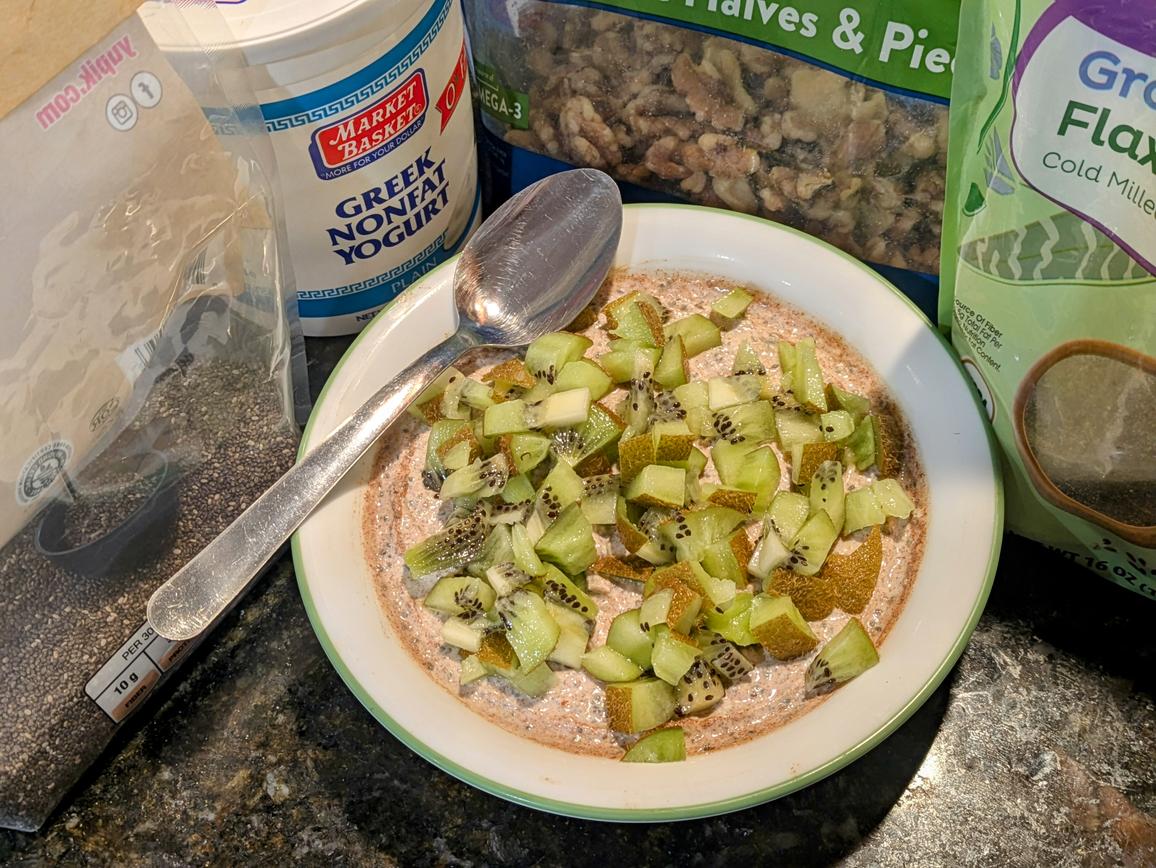
Serving Size: 1 medium (69 g)
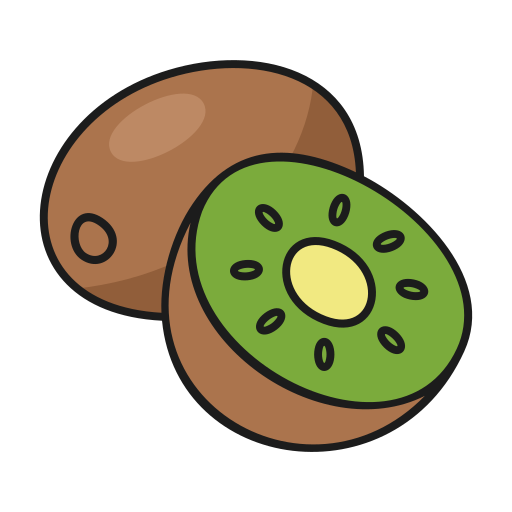
Lemon juice is one of the most useful ingredients in the kitchen. It’s packed with vitamin C, while also being low in both calories and sugar. Beyond its vitamin content, lemon juice contains flavonoids and citric acid, which may help enhance iron absorption from plant foods and support digestion.
Lemon juice is more than just a tart flavor booster — it’s a natural preservative. A squeeze of lemon helps prevent fruits like apples and avocados from browning, and adds brightness to everything from salad dressings and marinades to baked goods and sauces. You can even mix it into water or tea for a refreshing, low-calorie drink. While bottled lemon juice is convenient, fresh-squeezed juice has more flavor and often more nutrients.
Lemon is probably my favorite flavor when it comes to dinner. I'm constantly putting lemon luice and lemon pepper on my roasted broccoli, sauteed ground meat, roasted salmon, and in my sauces. Check out some great recipes featuring lemon below:
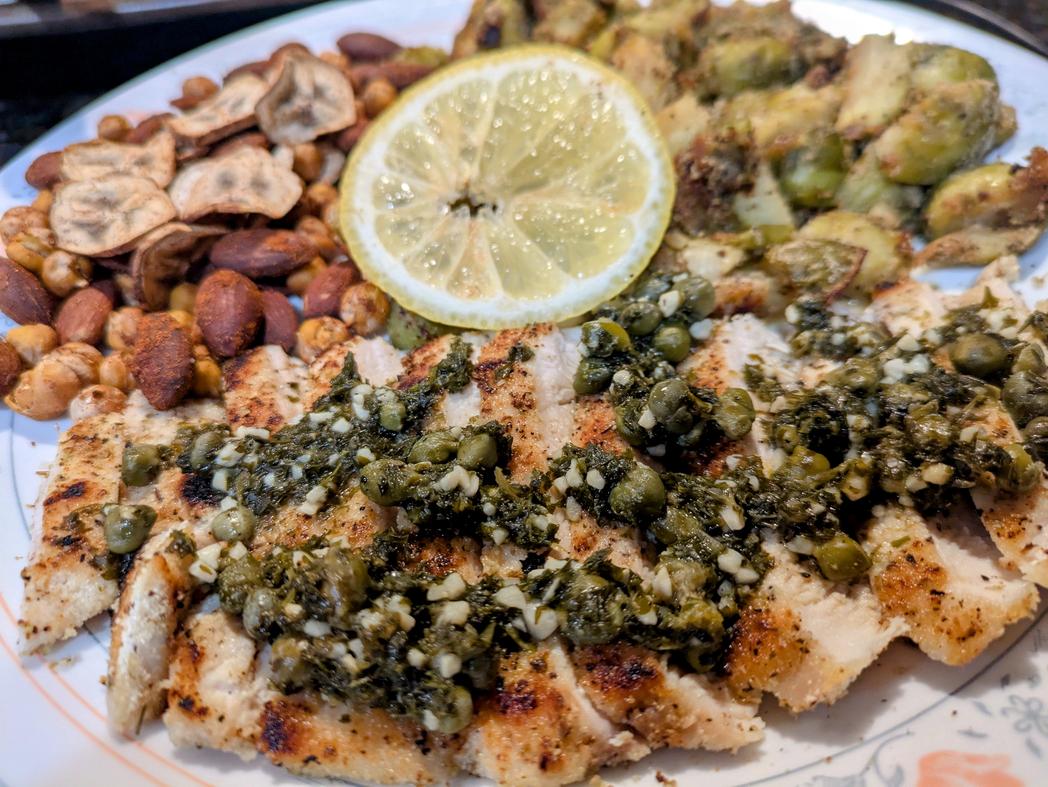
Serving Size: 1 tbsp (15 g)
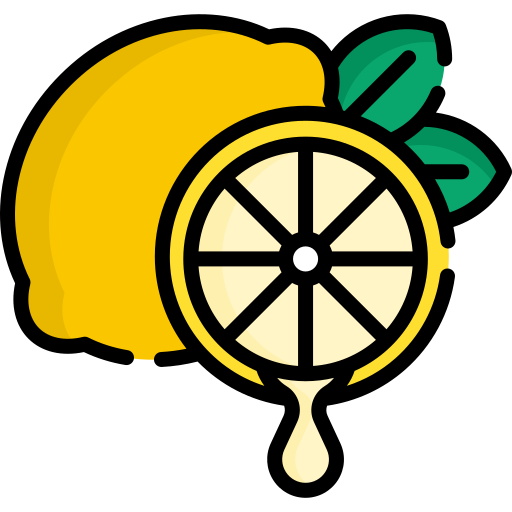
Lemons are technically a hybrid citrus fruit, believed to be a cross between a bitter orange and a citron. While you probably wouldn’t snack on them like a clementine, lemons are one of the most versatile fruits in cooking and baking. They’re packed with vitamin C, and also provide small amounts of potassium and vitamin B6. Lemons are loaded with flavonoids and other antioxidants, which can support immune health and help reduce inflammation. They’re very low in sugar, with only about 2 g per fruit (58 g).
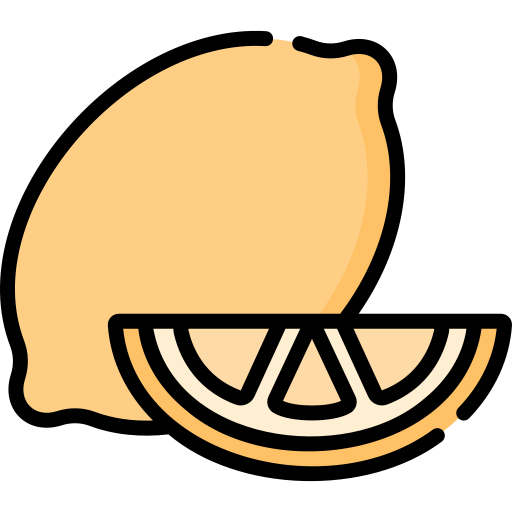
Serving Size: 1 medium (58 g)
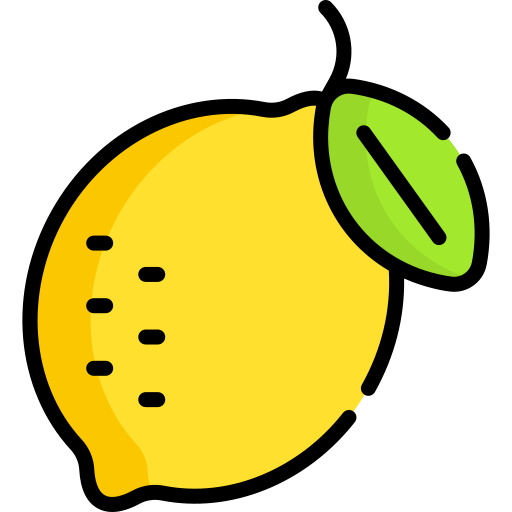
Lime juice is mostly water and citric acid, giving lots of flavor with very few carbs or calories. It's an excellent source of vitamin C and a handy way to add acidity and brightness to foods without raising blood sugar levels.
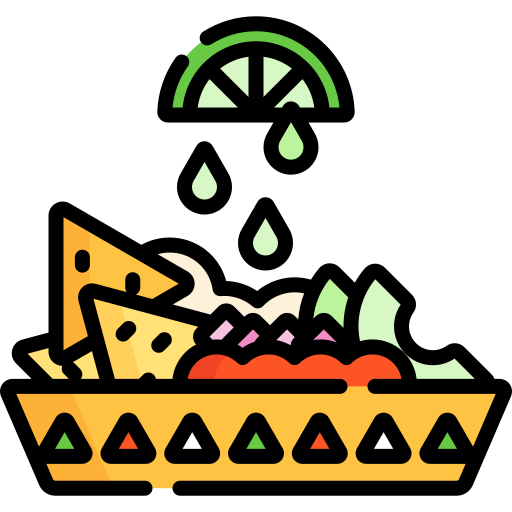
Serving Size: 1 tbsp (15 g)
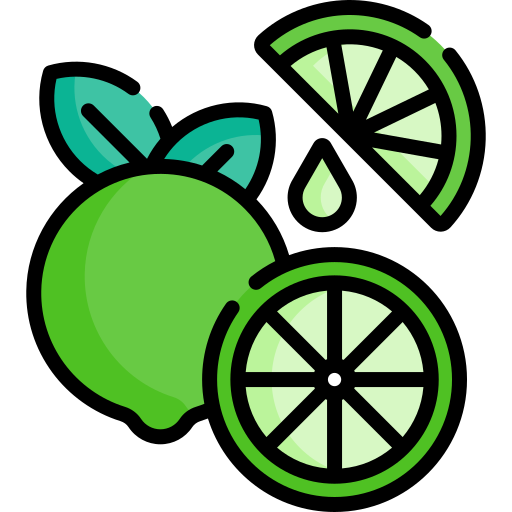
Limes are a tart, low calorie citrus fruit that are low in carbs and high in vitamin C, which supports collagen production, immune health, and iron absorption. They also provide small amounts of fiber, vitamin B6, copper, and vitamin K.
.png)
Serving Size: 1 medium (67 g)
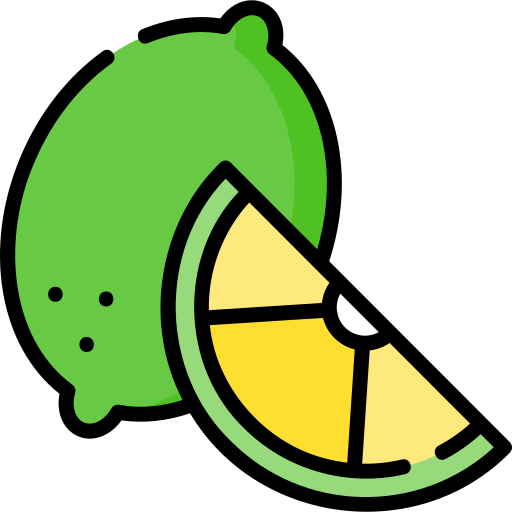
Mandarins are a small, easy-to-peel type of orange that are naturally sweet and refreshing. One medium mandarin (about 88 g) has only about 47 calories, 2 g of fiber, and about 9 g of sugar. They're best known for being rich in vitamin C, but also contain a fair amount of vitamin A, vitamin B6, and folate. Their bright orange color comes from carotenoids, which support healthy vision and skin.
.png)
Serving Size: 1 medium (88 g)
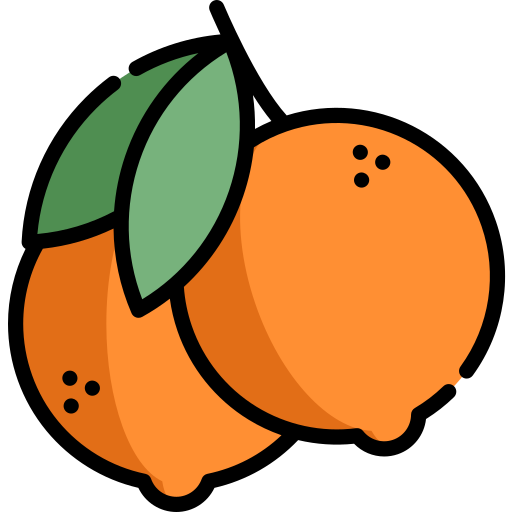
Mangos (or it is 'mangoes'?) are a higher sugar tropical fruit that are decently low calorie and contain a moderate amount of fiber. They're most known for vitamin C, helping to produce collagen and decrease inflammation. Mangos are also a decent source of vitamin A, vitamin B6, folate, vitamin E, and copper.
.png)
Serving Size: 1 medium (165 g)
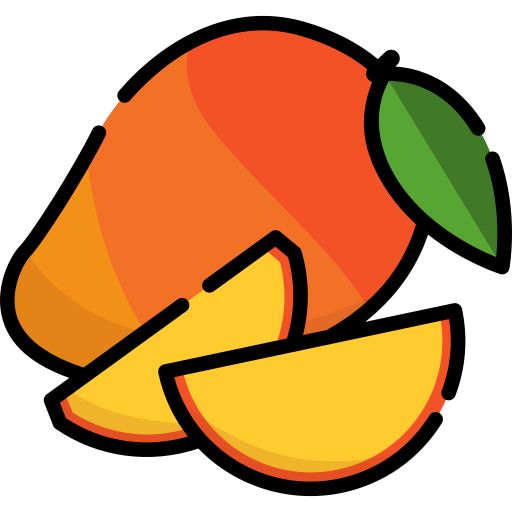
Olives are technically a fruit, though they’re most often eaten as a savory food or pressed into olive oil. They’re unique among fruits for being very high in healthy monounsaturated fats rather than carbohydrates. A typical serving of 1 tbsp (about 15 g) contains only 22 calories, 2 g of fat, and virtually no sugar. Olives are also rich in antioxidants and contain some vitamin E. They’re naturally quite salty due to the brining process, which makes them a concentrated source of sodium. Regular consumption of olives and olive oil has been linked with improved heart health and reduced inflammation.
.png)
Serving Size: 1 tbsp (15 g)

Oranges are perfectly refreshing. They're a good source of fiber, contain a moderate amount of natural sugars, and are exceptionally high in vitamin C (though not as much as guavas). Oranges also provide a bit of thiamin and folate, supporting cardiovascular and nervous system health, as well as DNA synthesis. They come in a few different forms: the larger oranges, the medium sized tangerines, and smaller clementines (or mandarins). I would eat oranges more often if they weren't so annoying to open. Oh but stay away from orange juice; that's basically just liquid sugar with some vitamin C and no fiber, not filling you up at all and leading to big spikes in glucose.
.png)
Serving Size: 1 medium (140 g)
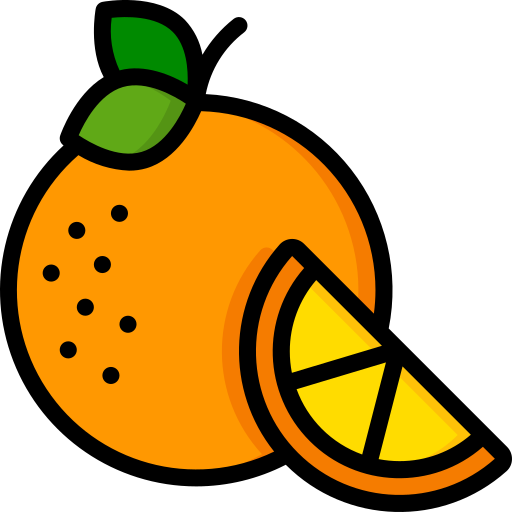
You would think papaya is a melon like cantaloupe or honeydew, but no, fruits are just weird like that. What papayas are though is a good source of vitamin C, like many other fruits. 1 cup (145 g) of papaya contains nearly 100% of the RDA of vitamin C, with just 62 calories, 3 g of fiber, and 11 g of sugar. The orange color of papaya is due to it's beta-carotene content, which aids in eye health. Papaya can also be useful for supporting digestion due to the enzyme papain.
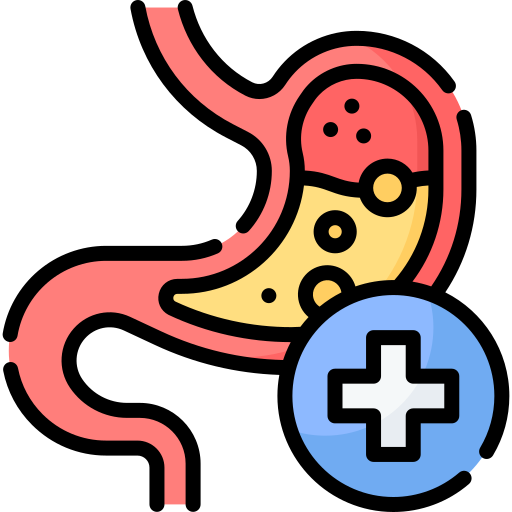
Serving Size: 1 cup (145 g)

Passion fruit is a tropical fruit with a tough purple or yellow rind and a seedy, jelly-like interior. It has a tart-sweet flavor and is often eaten by scooping out the pulp or adding it to smoothies and desserts. Despite its small size, passion fruit is nutrient-dense. One fruit (18 g) contains just 17 calories, 2 g of fiber, and 2 g of natural sugars. It contains a fair amount of vitamin A, vitamin C, and beneficial plant compounds like carotenoids and polyphenols, which support immune function and skin health. Passion fruit also contains unique alkaloids that may promote relaxation and better sleep.
.png)
Serving Size: 1 medium (18 g)
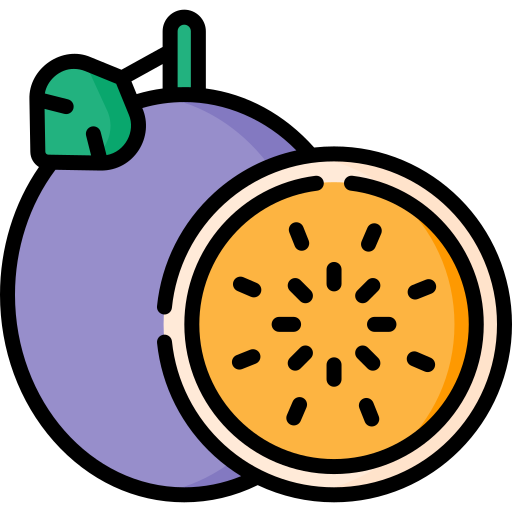
Peaches are the fuzzy ones, whereas nectarines are not. Outside of the precense (or lack of) fuzz, peaches and nectarines are largely very similar. They contain an almost equal amount of calories, natural sugar, fiber, B vitamins, vitamin C, and copper. A peach is a fine fruit that you can't go wrong with as a snack, but it doesn't stand out nutritionally at all, containing only 7% of the RDA for vitamin C in a medium sized fruit. However, peach skin does contain some helpful antioxidants, helping to combat inflammation.

Serving Size: 1 medium (150 g)
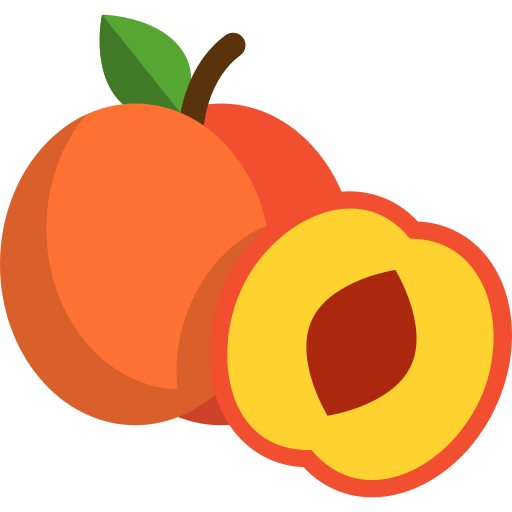
If apples and bananas are the poster children for fruit, then pears are the ugly step-sister. While as common as apples and bananas, they're often forgotton about. While you definitely can't go wrong having a pear as a snack, it lacks nutritionally compared to many other fruits. Your average pear has right around 100 calories with 17 g of natural sugars and a moderate amount of vitamin C and copper. Pears are decently high in fiber though, containing 6 g in a medium sized fruit, making them good for supporting digestion.
.png)
Serving Size: 1 cup (178 g)
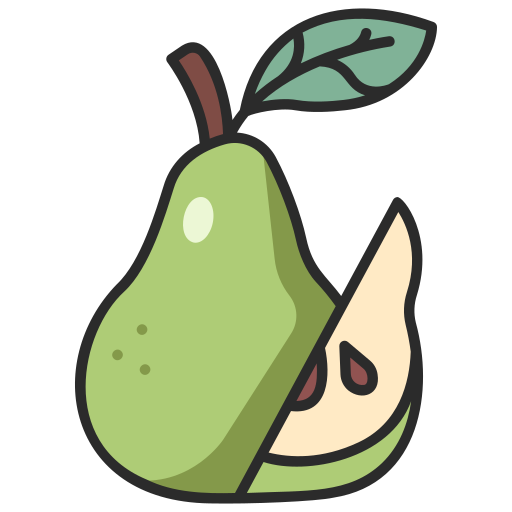
Persimmons are a sweet, honey-like fruit that come in two main varieties: astringent (like Hachiya) and non-astringent (like Fuyu). They are typically bright orange when ripe and can be eaten fresh, dried, or baked into recipes. One medium persimmon (170 g) provides about 119 calories, 6 g of fiber, and 31 g of carbohydrates. Persimmons contain vitamin A, vitamin C, and copper. They’re also rich in antioxidants such as beta-carotene and flavonoids, which support heart health and may help lower inflammation. Because of their high natural sugar content, persimmons taste almost like candy when fully ripe.
.png)
Serving Size: 1 medium (170 g)
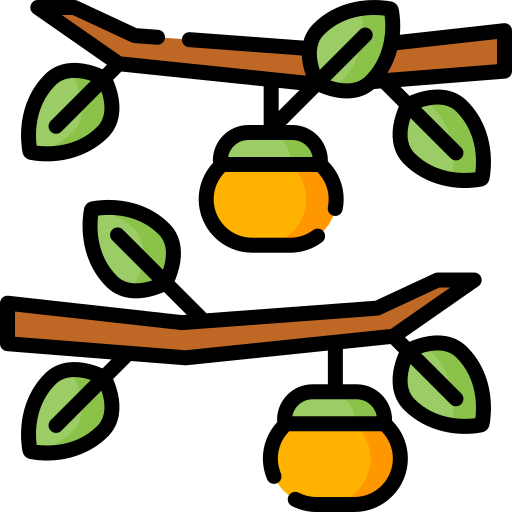
Pinapples are home to a certain sponge up to some nautical nonsence. They are also a tropical fruit with a moderate amount of both sugar and fiber, but excel in vitamin C. While not the richest source on this list, 1 cup (165 g) of pineapple contains 83 calories with 78.9 mg (88 %) of vitamin C. Pineapples are also a great sources of the minerals copper and manganese, helping to support your immune system and aid in hormone production. Pineapple also contains the enzyme bromelain, which may aide in digestion and have anti-inflammatory effects.

Serving Size: 1 cup (165 g)
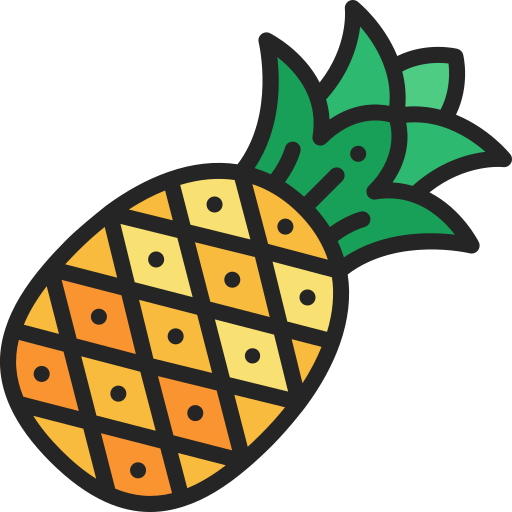
Plums are basically better peaches or nectarines. Not only do they taste better (imo), but plums contain almost double the amount of vitamin C, though this is admittedly still not a ton. Plums also come with some vitamin K and copper, aiding in bone health and the formation of red blood cells. Where plums really shine though is their antioxidant profile, containing anthocyanins, helping to protect against heart and neurological diseases. Generally, with fruit (and all food), the more color, the better, and plums are no exception.
.png)
Serving Size: 1 cup (165 g)
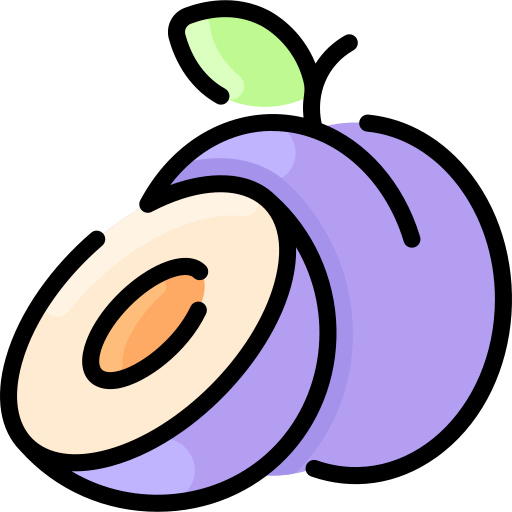
Ah pomegranates, the expensive but delicious fruit that manages to stain everything in a 5 foot radius with it's redish/purplish juice. These seeds are extremely nutritious and surprisingly calorie dense when compared to other fruits. 1/2 cup (87 g) of pomegranate seeds contains 72 calories with 4 g of fiber, 2 g of protein, and 12 g of natural sugars. Pomegranates contain a moderate amount of vitamin C and K, as well as copper and some potassium. More notably, however, is pomegranates concentration of punicalagins and anthocyanins, which are powerful plant compounds helping to reduce inflammation and protect heart health.
.png)
Serving Size: 1/2 cup (87 g)
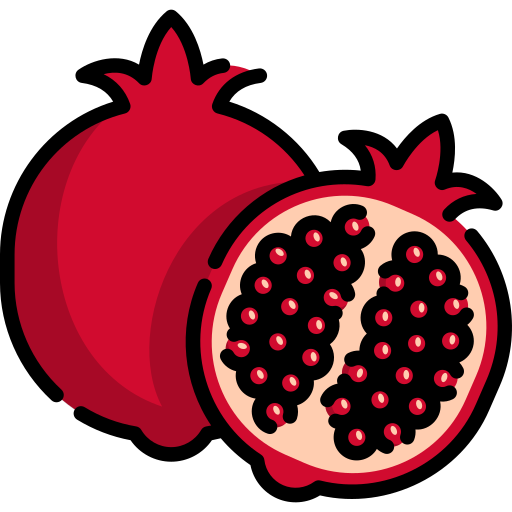
Prunes are simply just plums with the water removed. They're an unsweetened dried fruit with all the same health benefits of plums, minus the water content which helps to fill you up. They’re decently high in fiber and potassium, both of which support digestion and heart health. Prunes are also a source of vitamin K, vitamin B6, and copper. Regular prune consumption has even been linked to better bone health. But don't overeat on plums, especially since they can have a laxative effect. This is due to not only their fiber content, but also the natural prescence of the sugar alcohol sorbitol.
.png)
Serving Size: 1/4 cup (40 g)
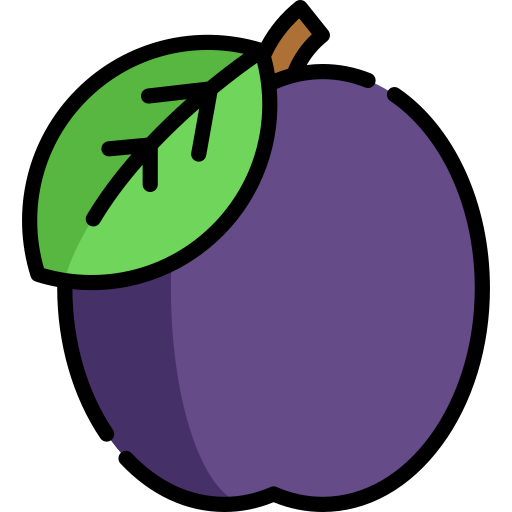
Raisins are dried grapes, but I'm sure you already knew that. This means they have all the same positives of grapes, including vitamin K, copper, and resveratrol. They are extremely calorie dense though, as most of the water is removed, essentially leaving nothing but sugar and fiber. As with all dried fruit, like dates and dried figs, it's important to measure out the quantity of raisins you eat as to not overconsume.
Finally, a fruit I can plug more recipes for again. I already referred to dates as big raisins, so I guess that makes a raisin a small date? You can easily substitute one for another in recipes, as both these unsweetened dried fruits can be blended into a sweet pasted and mixed into baked goods. Below are some recipes specifically calling for raisins, but know that anytime you need to blend dates or dried figs as a sweetener in a recipe, raisins will work as well:
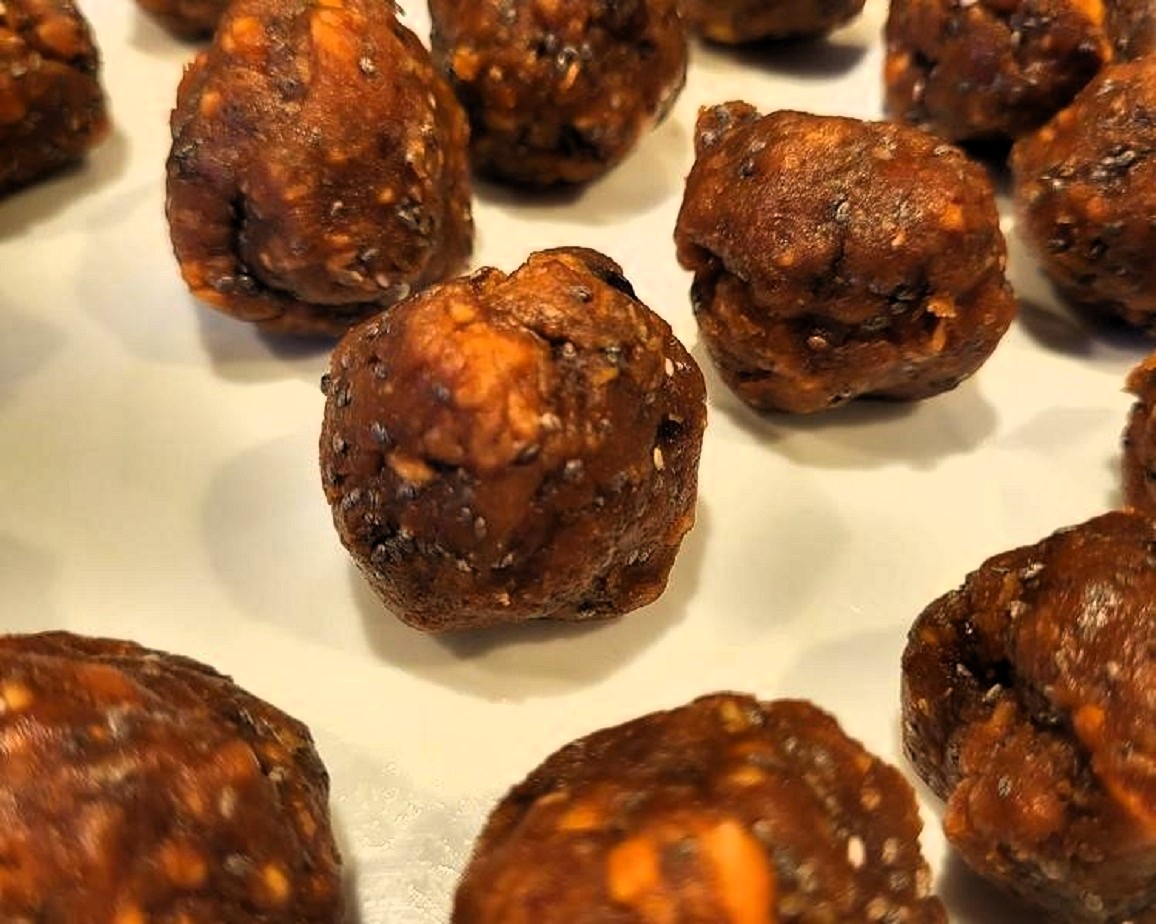
Serving Size: 1/4 cup (40 g)
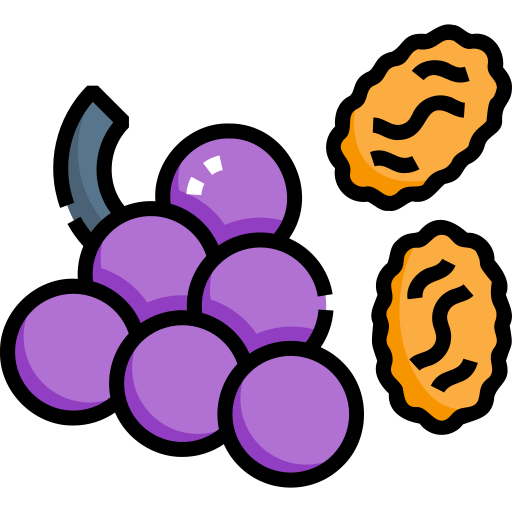
Raspberries are the second to last berry on the list. We've already covered blackberries and blueberries, and still have strawberries yet to come. But for now, raspberries are similar to blackberries in that they both contain more fiber than sugar, where 1 cup (123 g) of raspberries has 8 g of fiber and 5 g of sugar in 64 calories. Raspberries also have a respectable amount of vitamin C, copper, and manganese, which all aid in reducing inflammation and supporting brain health. This low sugar fruit is also high in antioxidants due to their red color.
As with all other berries, raspberries are the perfect topping to any yogurt, oatmeal, or even salad, and go great made into a jam. While my Berry Delicious Protein Overnight Oats and Fatty Yogurt have blueberries, and my Brain Boosting Yogurt and Berry Chia Jam call for strawberries, raspberries can easily be substituted for a different flavor and extra nutrition. Raspberries are also the traditional fruit used in the jelly of Italian rainbow cookies, so make sure to check out my (totally non-traditional) Dye Free Rainbow Cookies that at least still preserve the raspberries.
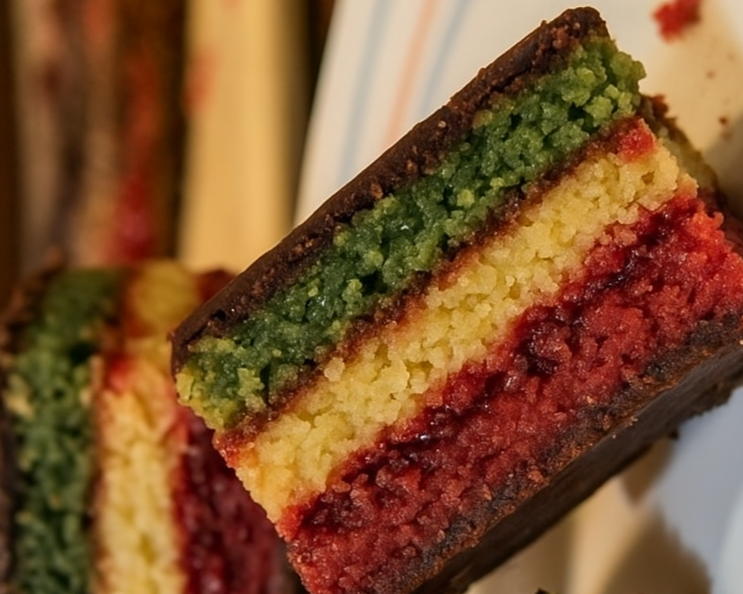
Serving Size: 1 cup (123 g)
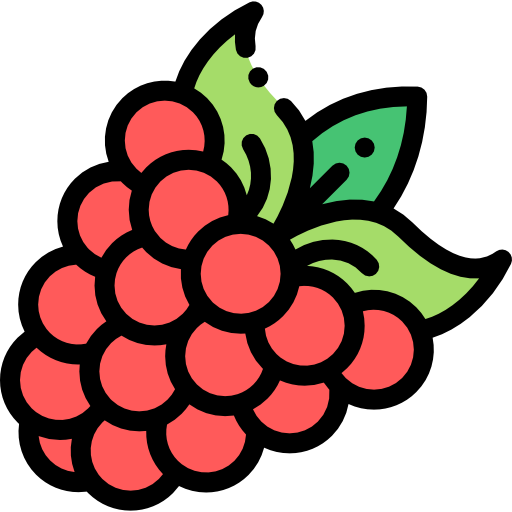
Starfruit, also known as carambola, are in the shape of a star, as the name would suggest. The fruit has 5 tall ridges, and a crossectional cut of it will yield a piece of fruit shaped like a star, which I think is quite neat. Starfruit is a very low calorie and low sugar fruit, where 1 cup (132 g) contains only 41 calories and 5 g of sugar with 4 g of fiber. The high water and fiber content of starfruit helps to support digestion by filling you up for minimal calories. Starfruit is also rich in vitamin C, helping to suport collagen production and aid in the absorption of iron. It's also a good source of vitamin B5 and copper.

Serving Size: 1 cup (132 g)
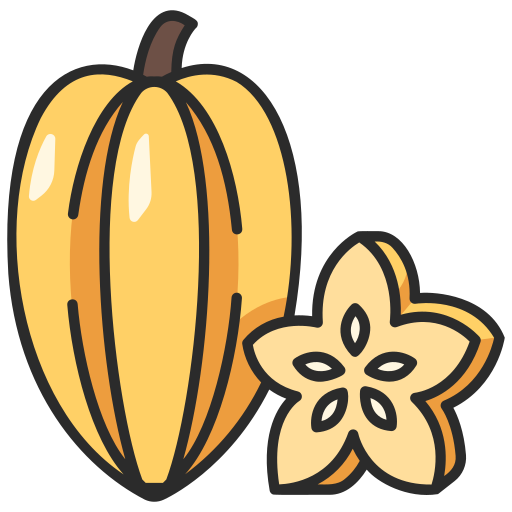
Strawberries are our final berry, but not the final fruit; don't worry, there's still watermelon to come. Compared to blackberries, blueberries, and raspberries, strawberries are typically the cheapest. Strawberries are fairly low in both sugar (7 g) and calories (49), and contain quite a bit of fiber (3 g). They have just shy of 100% DV of vitamin C in just 1 cup (152 g), with also a respectable amount of both manganese and folate, which aids in wound healing and cell growth. Strawberries are another great anti-inflammatory food, as they contain high concentrations of antioxidants.
Their anthocyanin content is likely lower than other berries; however, strawberries are still one of the most nutritious fruits you can snack on or mix into your meals. Berries are perfect diced up on top of a salad, spooned on top of yogurt, mixed into oatmeal, or served inside a Whole Wheat Breakfast Crepe. Below are some great recipes utilizing strawberries:
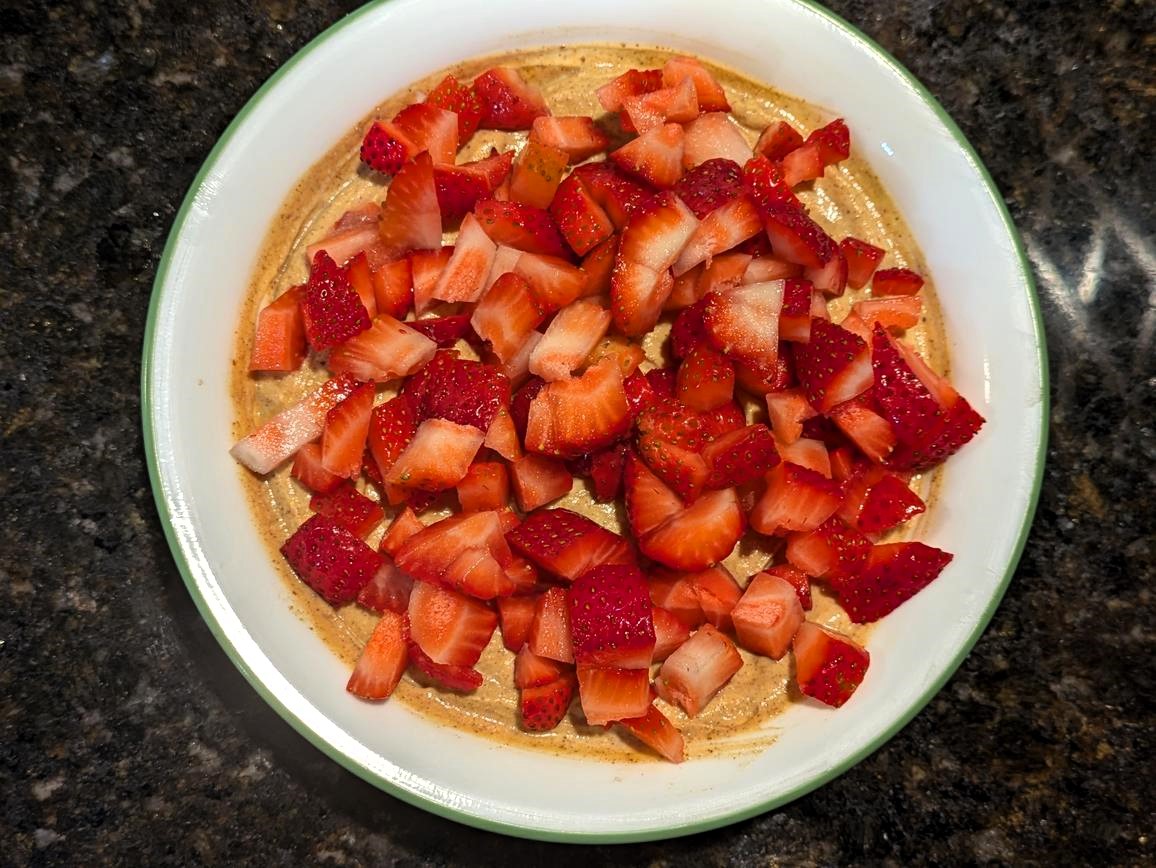
Serving Size: 1 cup (152 g)
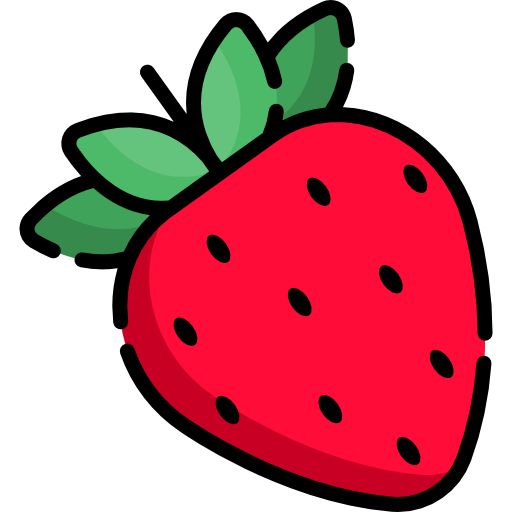
Finally, we've arrived at watermelon, the fruit that only seems to exist at summer barbeques. Oh and hotel breakfast as well, though I typically think of honeydew or cantaloupe for that. Watermelon, as the name suggests, is high in water (duh). Watermelon doesn't stands out very much micro-nutritionally, only containing minimal amounts of vitamin A, vitamin B5, and vitamin C. Watermelon is also pretty low in fiber as well. What watermelon does do well is being a very low calorie and high volume fruit with a lower amount of sugar compared to some others on this list. It's refreshing, delicious, and a perfect side to breakfast when you need just a little bit more to eat.

Serving Size: 1 cup (152 g)
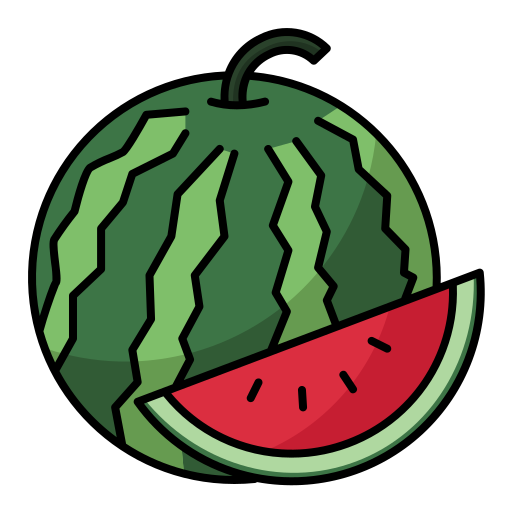
Nutritional Comparison
Scroll to the right to read information about every variation

References
This post may contain affiliate links
I've been wanting to break down different foods in many common food groups for a while now, and now is finally time to get a little fruity. Everyone knows they should eat their fruits and vegetable, but why? While not as quite as healthy as veggies, fruits are still a healthy snack or side, being good sources of fiber, vitamins, minerals, natural sugar, and water. Fruit really is nature's candy, giving you a quick energy boost to hold you over until the next meal if needed, while still packing some nutrition with delicious flavor.


Other Posts in this Series
- Let's Meet The Meats
- I'm Nuts For Nuts
- I See Seeds In Your Future
- Beans Beans The Musical Fruit
- Going Bananas For Bananas
- Lettuce Turnip The Beet
- I'm Hooked On Fish
- A Grain Of Truth
- I'm Dying For Dairy


Contents
- Apple
- Apricot
- Avocado
- Banana
- Blackberry
- Blueberry
- Boysenberry
- Cantaloupe
- Cherry
- Clementine
- Coconut
- Cranberry
- Date
- Fig (dried)
- Fig (fresh)
- Grape
- Grapefruit
- Guava
- Honeydew
- Kiwi
- Lemon Juice
- Lemon
- Lime Juice
- Lime
- Mandarin
- Mango
- Olive
- Orange
- Papaya
- Passion Fruit
- Peach
- Pear
- Persimmon
- Pineapple
- Plum
- Pomegranate
- Prune
- Raisin
- Raspberry
- Starfruit
- Strawberry
- Watermelon
- Nutritional Comparison


Apples are possibly the poster child for the word 'fruit'. They taste great, require no preparation, can be taken on the go, and last for months in the fridge. Forget about bananas and berries going bad if you look at them the wrong way; the humble apple will be fine in that bottom drawer until next quarter.
You average apple clocks in at under 100 calories with 4 g of fiber. Apples are a decent source of both vitamin B6 and vitamin C. The skins (which I hope you're eating) contain beneficial phytochemicals due to their red color, aiding your body as an antioxidant by decreasing inflammation and combating oxadative stress. An apple does contain 19 g of (naturally occuring) sugar, meaning it's fairly high sugar for a fruit. Not necessarily a bad thing from whole food sources, but something to keep in mind.
There's no shortage of uses for apples. You can eat them plain, or with peanut butter or goat cheese. You can add them to your oatmeal or yogurt (either raw or cooked). Then there's applesauce. Unsweetened applesauce is a great way to keep baked goods moist and add subtle sweetness without the need for added fat (butter or oil) or added sugar. Below are some great recipes using both apples and applesauce:
- Stovetop Apple Oatmeal
- Pumpkin Spice Apple Bread
- Microwave Protein Mug Cake
- Healthier Graham Cracker Pie Crust
- Cheesy Protein Cornbread
- Low Sugar Granola
- Sugar Free Apple Pie
- No Added Sugar Apple Spread
- Protein Apple Bread
- Apple Crumble with Oats
- Sweet Potato Brownies (SF)

------------------------------------------
Total Fat: 0.2g (0 %)
Total Carbohydrate: 21.5g (8 %)
Fiber: 3.6g (13 %)
Net Carbs: 17.9g
Total Sugar: 16.3g
Protein: 0.4g (0 %)
Total Fat: 0.2g (0 %)
Total Carbohydrate: 21.5g (8 %)
Fiber: 3.6g (13 %)
Net Carbs: 17.9g
Total Sugar: 16.3g
Protein: 0.4g (0 %)
------------------------------------------
Vitamin C: 2.1mg (2 %)
------------------------------------------
Potassium: 170mg (3 %)
------------------------------------------Vitamin C: 2.1mg (2 %)
------------------------------------------
Potassium: 170mg (3 %)

Apricots are nice little stone fruits with a decent source of fiber and, surprisingly, protein? While not much, 2 g of protein for 70 calories isn't too shabby if you were expecting zero. Just stay away from dried apricots. Not because of added sugar (they're typically unsweetened); they just taste nasty.
Compared to apples, apricots have a more noticable micronutrient profile, being a good source of vitamin A and vitamin C. Their beta-carotene content contributes to skin and eye health, whereas vitamin C is a potent antioxidant. Apricots are also nice sources of copper and potassium. Did you know that apricots have more potassium than bananas? Well now you do.

------------------------------------------
Total Fat: 0.1g (0 %)
Total Carbohydrate: 3.9g (1 %)
Fiber: 0.7g (2 %)
Net Carbs: 3.2g
Total Sugar: 3.2g
Protein: 0.5g (1 %)
Total Fat: 0.1g (0 %)
Total Carbohydrate: 3.9g (1 %)
Fiber: 0.7g (2 %)
Net Carbs: 3.2g
Total Sugar: 3.2g
Protein: 0.5g (1 %)
------------------------------------------
Vitamin C: 3.5mg (4 %)
------------------------------------------
Potassium: 91mg (2 %)
------------------------------------------Vitamin C: 3.5mg (4 %)
------------------------------------------
Potassium: 91mg (2 %)

Yes, avocados are a fruit. They don't have a typical fruit nutritional profile though. Avocados are notably the highest fat fruit on this list, with one of the highest fiber contents and least net carbs. Avocados contain a notable amount of potassium, comparable to that of bananas. They're also a rich source of folate, vitamin E, vitamin K, and copper.
Their high fiber and healthy fat contents promote satiety, keeping you feeling full for longer, as well as blunting blood sugar spikes. The monounsaturated fats found in avocados are beneficial for heart and brain health, vitamin E promotes skin health, and folate aids in the formation of red blood cells. They are quite caloric because they're high in fat, which is something to keep in mind.
No one just eats an avocado straight up though (I hope). Avocados are best at making things creamy for (ironically) less calories, substituting calorically dense ingredients like mayo, oil, and sour cream. Sliced on a sandwich, mashed into a salad, or prepared into guac, avocados are the perfect topping to nearly any meal. Below are some great used for avocados:
- Avocado Tuna Salad
- Hot Honey Beef Bowls
- Date Night Superfood Bowls
- Olivcado Salad Dressing
- Avocado Pesto - Vegan and Oil Free
- Versatile Avocado Toast
- Brain Boosting Yogurt
- Holy Guacamole

------------------------------------------
Total Fat: 21.0g (27 %)
Total Carbohydrate: 11.8g (4 %)
Fiber: 9.2g (33 %)
Net Carbs: 2.6g
Total Sugar: 0.4g
Protein: 2.7g (5 %)
Total Fat: 21.0g (27 %)
Total Carbohydrate: 11.8g (4 %)
Fiber: 9.2g (33 %)
Net Carbs: 2.6g
Total Sugar: 0.4g
Protein: 2.7g (5 %)
------------------------------------------
Vitamin C: 12.0mg (14 %)
------------------------------------------
Potassium: 690mg (15 %)
------------------------------------------Vitamin C: 12.0mg (14 %)
------------------------------------------
Potassium: 690mg (15 %)

Outside of apples, bananas are probably the first thing that come to mind when you think of the word 'fruit'. They're also probably the first food to come to mind when you think of potassium. While yes, bananas are a good source of potassium, aiding in electrolyte balance, hydration, muscle and nerve function, and kidney health, they're far from the best source. Avocados, apricots, guava, hemp seeds, black beans, and potatoes are all comparable or better sources of potassium. Outside of potassium though, bananas pack quite a bit of vitamin B6, vitamin C, copper, and manganese. There's also 3 g of fiber in your average banana.
Rarely do I ever just eat a banana as intended; sometimes I'll eat them with peanut butter. But most of the time, I prefer to bake with them, mashing them into my breakfast or baked goods. Bananas are naturally sweet, taste great, and keep baked goods moist without the need for adding unhealthy fats, like butter or vegetable oil. Who doesn't like banana bread or banana pancakes? Check out some great banana based recipes below:
- Oatmeal Berry Breakfast Bars
- Green Hemp Smoothie
- Golden Milk, aka Sleepy Smoothie
- Banana No-Cream Pie
- No Bake Homemade Tiramisu
- Coconut Banana Rum Cake
- No Bake Cheesecake Bars
- Banana Protein Pancakes
- Peanut Butter Fudge Bars
- Peanut Butter Banana Granola Bars
- Sweet Potato Banana Muffins
- Cottage Cheese Peanut Butter
- Three Ingredient Brownie Bites
- Strawberry Chia Protein Oatmeal
- Yogurt Free Protein Oats
- Neopolitan Banana Ice Cream
- Peanut Butter Banana Pie
- Banana Nut Bread Protein Overnight Oats
- Oatmeal Banana Mini Muffins
- Peanut Butter Banana Yogurt Bowl
- Trail Mix Balls
- Chocolate Nut Milkshake
- Almond Butter Date Brownies
- Protein Banana Nut Bread
- Two Ingredient Oat Cookies
- Peanut Butter & Jelly Muffins
- Banana Bread Hummus Spread
- Chickpea Chows
- Protein Fruit Smoothie
- Caramel Protein Candy Bars
- Peanut Butter Banana Bars
- No Bake Protein Brownies
- Nice Cream Sandwiches
- Sugar Free Peanut Butter Cheesecake
- Protein Brownie Bars
- Banana Nice Cream
- No Bake Cookie Bars
- Double Chocolate Banana Bread
- Chocolate Chip Cookie Skillet

------------------------------------------
Total Fat: 0.4g (0 %)
Total Carbohydrate: 25.1g (9 %)
Fiber: 2.9g (10 %)
Net Carbs: 22.2g
Total Sugar: 13.5g
Protein: 1.2g (2 %)
Total Fat: 0.4g (0 %)
Total Carbohydrate: 25.1g (9 %)
Fiber: 2.9g (10 %)
Net Carbs: 22.2g
Total Sugar: 13.5g
Protein: 1.2g (2 %)
------------------------------------------
Vitamin C: 9.6mg (11 %)
------------------------------------------
Potassium: 394mg (9 %)
------------------------------------------Vitamin C: 9.6mg (11 %)
------------------------------------------
Potassium: 394mg (9 %)

Blackberries are our first berry on the list, with blueberries, raspberries, and strawberries soon to follow. Blackberries are one of the lowest sugar fruits, as they contain more fiber (7.6 g) than sugar (7.0 g) in 1 cup (144 g), one of the few frutis to make this claim. Their high fiber content aids in promoting healthy digestion, and their dark purple color is a rich source of antioxidants known as anthocyanins, promoting healthier brain and heart health.
Blackberries are also one of the highest sources of vitamin C, a powerful antioxidant and immune supporting micronutrient. Additionally, blackberries are a good source of vitamin B5, folate, vitamin E, vitamin K, copper, and manganese. They're the perfect combination of sweet and tart, and go great in jams, on salads, or as a topping to oatmeal or yogurt.

------------------------------------------
Total Fat: 0.7g (1 %)
Total Carbohydrate: 13.8g (4 %)
Fiber: 7.6g (27 %)
Net Carbs: 6.2g
Total Sugar: 7.0g
Protein: 2.0g (4 %)
Total Fat: 0.7g (1 %)
Total Carbohydrate: 13.8g (4 %)
Fiber: 7.6g (27 %)
Net Carbs: 6.2g
Total Sugar: 7.0g
Protein: 2.0g (4 %)
------------------------------------------
Vitamin C: 30.2mg (33 %)
------------------------------------------
Potassium: 233mg (4 %)
------------------------------------------Vitamin C: 30.2mg (33 %)
------------------------------------------
Potassium: 233mg (4 %)

Most people know blueberries for being an antioxidant powerhouse, and they're not wrong. The dark color of blueberries (which ironically isn't really blue) are full of phytochemicals known as anthocyanins, which are beneficial for reducing inflammation, as well as supporting heart and brain health. Blueberries are also a good source of fiber, vitamin K, and manganese, with a moderate amount of natural sugars.
Blueberries are my personal favorite berry (sorry strawberries, raspberries, and blackberries). They're the perfect size, not requiring any dicing to put in a salad or bowl of oatmeal, and also not too expensive (especially when frozen). Check out some recipes below for some delicious used of this super berry:
- Oatmeal Berry Breakfast Bars
- Fatty Yogurt
- Berry Chia Jam
- Brain Boosting Yogurt
- Berry Delicious Protein Overnight Oats
- Blueberry Yogurt Bark
- Low Sugar Berry Jam
- Peanut Butter & Jelly Muffins

------------------------------------------
Total Fat: 0.5g (0 %)
Total Carbohydrate: 20.3g (7 %)
Fiber: 3.4g (13 %)
Net Carbs: 16.9g
Total Sugar: 13.9g
Protein: 1.0g (1 %)
Total Fat: 0.5g (0 %)
Total Carbohydrate: 20.3g (7 %)
Fiber: 3.4g (13 %)
Net Carbs: 16.9g
Total Sugar: 13.9g
Protein: 1.0g (1 %)
------------------------------------------
Vitamin C: 13.6mg (15 %)
------------------------------------------
Potassium: 108mg (3 %)
------------------------------------------Vitamin C: 13.6mg (15 %)
------------------------------------------
Potassium: 108mg (3 %)

Boysenberries are a cross between a blackberry, raspberry, and loganberry, giving them a rich, tangy-sweet flavor and deep purple hue. Like other dark berries, they are an excellent source of fiber, as well as folate. One cup (132 g) of boysenberries contains about 9 g of fiber, 87 calories, and 12 g of net carbs. They're also notable for their high levels of anthocyanins and other antioxidants, which support heart health, help combat inflammation, and may play a role in brain health.

------------------------------------------
Total Fat: 0.5g (0 %)
Total Carbohydrate: 21.2g (8 %)
Fiber: 9.2g (33 %)
Net Carbs: 12.0g
Total Sugar: 12.0g
Protein: 1.9g (4 %)
Total Fat: 0.5g (0 %)
Total Carbohydrate: 21.2g (8 %)
Fiber: 9.2g (33 %)
Net Carbs: 12.0g
Total Sugar: 12.0g
Protein: 1.9g (4 %)
------------------------------------------
Vitamin C: 5.4mg (7 %)
------------------------------------------
Potassium: 242mg (5 %)
------------------------------------------Vitamin C: 5.4mg (7 %)
------------------------------------------
Potassium: 242mg (5 %)

Cantaloupe is a melon, like honeydew and watermelon. It's pretty low calorie due to its high water content, as 1 cup (156 g) contains only 53 calories with 1 g of fiber and 12 g of natural sugars. Cantaloupe is surprisingly pretty high in vitamin A, vitamin C, and potassium, benefitting skin, eye, and immune health.

------------------------------------------
Total Fat: 0.3g (0 %)
Total Carbohydrate: 12.7g (5 %)
Fiber: 1.4g (5 %)
Net Carbs: 11.3g
Total Sugar: 12.3g
Protein: 1.3g (3 %)
Total Fat: 0.3g (0 %)
Total Carbohydrate: 12.7g (5 %)
Fiber: 1.4g (5 %)
Net Carbs: 11.3g
Total Sugar: 12.3g
Protein: 1.3g (3 %)
------------------------------------------
Vitamin C: 57.3mg (64 %)
------------------------------------------
Potassium: 417mg (9 %)
------------------------------------------Vitamin C: 57.3mg (64 %)
------------------------------------------
Potassium: 417mg (9 %)

Cherries are not berries; rather, they're considered a stone fruit (does that mean a cherry is closer to an apricot than a blueberry?). If you can get past the annoyance of eating around the pits, cherries are a great addition to your diet. Cherries are quite a decent source of fiber, vitamin C, copper, and potassium. Although not a berry, cherries are nutritionally pretty similar to them. They're high in anthocyanins due to their dark red hue, making them great at combatting inflammation. Cherries also contain some naturally occuring melatonin, helping to support sleep. They are fairly high in sugar though, containing 20 g in 1 cup (154 g).

------------------------------------------
Total Fat: 0.3g (0 %)
Total Carbohydrate: 24.7g (9 %)
Fiber: 3.2g (12 %)
Net Carbs: 21.5g
Total Sugar: 19.7g
Protein: 1.6g (3 %)
Total Fat: 0.3g (0 %)
Total Carbohydrate: 24.7g (9 %)
Fiber: 3.2g (12 %)
Net Carbs: 21.5g
Total Sugar: 19.7g
Protein: 1.6g (3 %)
------------------------------------------
Vitamin C: 10.8mg (12 %)
------------------------------------------
Potassium: 342mg (8 %)
------------------------------------------Vitamin C: 10.8mg (12 %)
------------------------------------------
Potassium: 342mg (8 %)

Clementines are a type of mandarin orange, and while they’re technically a hybrid between a sweet orange and a willowleaf mandarin, most people just think of them as the easy-to-peel snack orange. Their small size and naturally segmented flesh make them one of the most convenient fruits to eat on the go—no knife required. Clementines are an excellent source of vitamin C and provide a decent amount of fiber, folate, and potassium. Like other citrus fruits, they’re rich in flavonoids, which can help support immune health and reduce inflammation. They’re a little lower in sugar compared to many other fruits, with about 7 g per fruit (74 g).

------------------------------------------
Total Fat: 0.1g (0 %)
Total Carbohydrate: 8.9g (3 %)
Fiber: 1.3g (4 %)
Net Carbs: 7.6g
Total Sugar: 6.8g
Protein: 0.6g (1 %)
Total Fat: 0.1g (0 %)
Total Carbohydrate: 8.9g (3 %)
Fiber: 1.3g (4 %)
Net Carbs: 7.6g
Total Sugar: 6.8g
Protein: 0.6g (1 %)
------------------------------------------
Vitamin C: 36.1mg (40 %)
------------------------------------------
Potassium: 131mg (3 %)
------------------------------------------Vitamin C: 36.1mg (40 %)
------------------------------------------
Potassium: 131mg (3 %)

While coconut is technically a fruit and not a nut, it's more similar to nuts due to its high fat content, most of which being saturated fat. Per ounce, coconut is lower in fat than most items on this list, while also being midly sweet and containing a decent bit of fiber. Under the hood, coconut is a decent source of both copper and manganese, though it is lacking in most micronutrients when compared to other nuts.
If fat is having a redemption arch, it's coconut that's leading the charge. The saturated fat content in coconut is comprised of mainly Medium Chain Triglycerides (MCTs), which are shown to be burned for energy, similar to carbs, while not spiking blood sugar or stimulating insulin secretion. There's a reason why coconut oil is often used as a healthier butter. It may have the same fat and calories, but having the same calories doens't make them equivalent.
While I've never had a whole coconut (yet), there are a plethora of coconut products on the market. Some good for you, (like coconut flour and unsweetened coconut flakes), some in the middle (like coconut oil), and some bad for you (like sweetened coconut flakes and coconut sugar). You can use unsweetened coconut flakes in my 7-Layer Bars and No Bake Energy Bites, or coconut flour in my No Bake Cheesecake Bars and Gluten and Grain Free Coconut Bread, and even coconut oil in my Sugar Free Apple Pie and Sugar Free Chocolate Bar. Coconut is a very versatile ingredient; you can even turn it into a 'nut' butter substitute if you blend unsweetened coconut flakes.

------------------------------------------
Total Fat: 9.4g (12 %)
Total Carbohydrate: 4.3g (2 %)
Fiber: 2.5g (9 %)
Net Carbs: 1.8g
Total Sugar: 1.7g
Protein: 0.9g (2 %)
Total Fat: 9.4g (12 %)
Total Carbohydrate: 4.3g (2 %)
Fiber: 2.5g (9 %)
Net Carbs: 1.8g
Total Sugar: 1.7g
Protein: 0.9g (2 %)
------------------------------------------
Vitamin C: 0.9mg (1 %)
------------------------------------------
Potassium: 100mg (2 %)
------------------------------------------Vitamin C: 0.9mg (1 %)
------------------------------------------
Potassium: 100mg (2 %)

Cranberries are a low sugar, high fiber, and low calorie fruit. They're a good source of vitamins C and E, as well as the mineral manganese. Their red color is a rich source of proanthocyanidins, helping to fight inflammation and protect against UTIs.
Cranberries are an incredibly tart fruit that I personally like, but most people despise. There's a reason why dried cranberries are pumped full of added sugar. Store-bought dried cranberries contain a whopping 26 g of added sugar in a 1/4 cup (40 g) serving. Not only is that a small serving of cranberries, but they're over half added sugar by weight. 26 g of sugar is more than 2 tablespoons, making them a candy. You wouldn't be putting gummy bears or jelly beans on your salad, so why put dried cranberries?
You can sometimes buy unsweetened dried cranberries (for significantly more money), or you can make your own. Same goes for cranberry sauce, most are filled with more added sugar than your average dessert. Instead, make my Unsweetened Dried Cranberries or Sugar Free Cranberry Sauce.

------------------------------------------
Total Fat: 0.1g (0 %)
Total Carbohydrate: 12.0g (4 %)
Fiber: 3.6g (13 %)
Net Carbs: 8.4g
Total Sugar: 4.3g
Protein: 0.5g (1 %)
Total Fat: 0.1g (0 %)
Total Carbohydrate: 12.0g (4 %)
Fiber: 3.6g (13 %)
Net Carbs: 8.4g
Total Sugar: 4.3g
Protein: 0.5g (1 %)
------------------------------------------
Vitamin C: 14.0mg (16 %)
------------------------------------------
Potassium: 80mg (2 %)
------------------------------------------Vitamin C: 14.0mg (16 %)
------------------------------------------
Potassium: 80mg (2 %)

Have you ever had a date before? Oh, you haven't; you must be lonely. Dates are a high calorie and high sugar dried fruit. They're basically a giant raisin, and are pretty similar to dried figs. Dates are also a decent source of fiber. There are typically 2 main forms of dates: the smaller deglet noor, and the larger medjool. Note that 3 deglet noor dates is roughly equivalent to 1 medjool date.
While not the most nutritious fruit out there, dates are still fantastic. Portion control is a must, but dates are by no means 'unhealthy'. They're basically nature's caramel candy. Being very sweet with a delicious flavor, dates can be easily substituted for refined sugars to make added sugar free desserts, snacks, and sauces. Below are some great uses for dates:
- Oil Free Balsamic Vinaigrette
- Dye Free Rainbow Cookies
- No Bake Homemade Tiramisu
- Chickpea Date Brownies
- Date Cuccidati Cookies
- Date Sweetened Frosting
- Date Snickers Bars
- No Bake Cheesecake Bars
- Amaretti Cookies with Dates
- Mint Chocolate Chip Date Cookies
- Date Sweetened Ketchup
- Peanut Butter Date Cookies
- No Bake Energy Bites
- Double Chocolate Date Cookies
- Chocolate Chip Date Cookies
- Almond Butter Date Brownies
- Copycat Chcocolate RX Bars
- Almond Flour Cookies
- Chocolate Chip Cookie Skillet

2 Medjool (40 g)
------------------------------------------
Total Fat: 0.2g (0 %)
Total Carbohydrate: 30.0g (11 %)
Fiber: 3.2g (12 %)
Net Carbs: 26.8g
Total Sugar: 25.3g
Protein: 1.0g (2 %)
Total Fat: 0.2g (0 %)
Total Carbohydrate: 30.0g (11 %)
Fiber: 3.2g (12 %)
Net Carbs: 26.8g
Total Sugar: 25.3g
Protein: 1.0g (2 %)
------------------------------------------
Vitamin C: 0.2mg (0 %)
------------------------------------------
Potassium: 262mg (6 %)
------------------------------------------Vitamin C: 0.2mg (0 %)
------------------------------------------
Potassium: 262mg (6 %)

Dried figs are very simimlar to dates, in that they're both unsweetened dried fruits that are quite high in natural sugar and calories, while supplying a moderate amount of fiber. Dried figs also supply some copper, which aids in the formation of red blood cells. As with all dried fruit, portion control is very much needed, as it is very easy to over eat without all the water that's typically found in fruits.
Figs are also the traditional fruit used in cuccidati cookies, which are Sicilian fig cookies often served on Christmas (picture a homemade Fig Newton). I have a recipe for them using dates instead, but figs would totally work as well; check out my Date Cuccidati Cookies, wich are free of added sugar and gluten. Or, for another traditional snack using figs, you can make Spanish Pan de Higo, which are essentially Larabars. Just blend together dried fruit, nuts, and any flavorings, like cinnamon or rum extract.

------------------------------------------
Total Fat: 0.4g (0 %)
Total Carbohydrate: 25.5g (9 %)
Fiber: 3.9g (14 %)
Net Carbs: 21.6g
Total Sugar: 19.2g
Protein: 1.3g (3 %)
Total Fat: 0.4g (0 %)
Total Carbohydrate: 25.5g (9 %)
Fiber: 3.9g (14 %)
Net Carbs: 21.6g
Total Sugar: 19.2g
Protein: 1.3g (3 %)
------------------------------------------
Vitamin C: 0.5mg (0 %)
------------------------------------------
Potassium: 272mg (6 %)
------------------------------------------Vitamin C: 0.5mg (0 %)
------------------------------------------
Potassium: 272mg (6 %)

Fresh figs carry all the benefits of dried figs, but without all the water removed. The inclusion of water makes these fruits much more filling. The same 100 calorie serving is about 1 cup (135 g) of fresh figs, as compared to 1/4 cup (40 g) of dried figs. Other than the water content, dried and fresh figs are essentially the same nutritionally.

------------------------------------------
Total Fat: 0.5g (0 %)
Total Carbohydrate: 28.8g (11 %)
Fiber: 4.4g (15 %)
Net Carbs: 24.4g
Total Sugar: 24.4g
Protein: 1.1g (3 %)
Total Fat: 0.5g (0 %)
Total Carbohydrate: 28.8g (11 %)
Fiber: 4.4g (15 %)
Net Carbs: 24.4g
Total Sugar: 24.4g
Protein: 1.1g (3 %)
------------------------------------------
Vitamin C: 3.0mg (3 %)
------------------------------------------
Potassium: 348mg (8 %)
------------------------------------------Vitamin C: 3.0mg (3 %)
------------------------------------------
Potassium: 348mg (8 %)

Grapes are technically berries; the more you know. They contain quite a bit of fiber, and are very sweet due to their high content of natural sugar. Grapes also contain some vitamin K and copper. Red grapes are likely 'better' for you than green, as red grapes are higher in the antioxidant resveratrol. Resveratrol is why people claim red wine is good for you. Or you could ditch the alcohol and eat the whole grape.
I don't have any recipes calling for grapes specifically, but that's because they make a great snack on their own. Even better though is frozen grapes. Just freeze grapes in an airtight container overnight, and eat straight from the freezer the next day. It's the perfect sweet and sour refreshing candy. You can also make homemade fruit syrup using grapes (or any other fruit), like I did in with Homemade Fruit Syrup, where I boiled down grape juice until I ended up with a syrup that I could use for baking, like I would honey or maple syrup.

------------------------------------------
Total Fat: 0.2g (0 %)
Total Carbohydrate: 27.2g (11 %)
Fiber: 1.4g (5 %)
Net Carbs: 25.8g
Total Sugar: 23.2g
Protein: 1.1g (2 %)
Total Fat: 0.2g (0 %)
Total Carbohydrate: 27.2g (11 %)
Fiber: 1.4g (5 %)
Net Carbs: 25.8g
Total Sugar: 23.2g
Protein: 1.1g (2 %)
------------------------------------------
Vitamin C: 4.8mg (6 %)
------------------------------------------
Potassium: 287mg (6 %)
------------------------------------------Vitamin C: 4.8mg (6 %)
------------------------------------------
Potassium: 287mg (6 %)

Grapefruit are in no way related to grapes, so it's odd that they share a similar name. Nevertheless, grapefruit are known for their vitamin C content, helping to enhance immunity. Additionally, grapefruit is a good source of vitamin A, particularly lycopene, which is plays a role in eye and skin health. They contain a moderate amount of fiber, and sugar, are relatively low calorie, and have a nice sweet and sour taste. Just please don't add any sugar on top of it, okay?

------------------------------------------
Total Fat: 0.2g (0 %)
Total Carbohydrate: 16.4g (6 %)
Fiber: 2.5g (9 %)
Net Carbs: 13.9g
Total Sugar: 10.6g
Protein: 1.2g (3 %)
Total Fat: 0.2g (0 %)
Total Carbohydrate: 16.4g (6 %)
Fiber: 2.5g (9 %)
Net Carbs: 13.9g
Total Sugar: 10.6g
Protein: 1.2g (3 %)
------------------------------------------
Vitamin C: 48.0mg (54 %)
------------------------------------------
Potassium: 208mg (5 %)
------------------------------------------Vitamin C: 48.0mg (54 %)
------------------------------------------
Potassium: 208mg (5 %)

What is the highest source of vitamin C? If you guesses oranges, then you'd be wrong. It's actually guava, with a whopping 419 % of the RDA in 1 cup (165 g). Thats for only 112 calories, with also an astounding 9 g of fiber and somehow 4 g of protein. Guava is also a good source of lycopene, niacin, vitamin B6, folate, copper, and magnesium. Oh, and guavas have the most potassium of any fruit, 1.5 times that of bananas. What can't this fruit do? I guess be available in my grocery store...

------------------------------------------
Total Fat: 0.5g (1 %)
Total Carbohydrate: 7.9g (3 %)
Fiber: 3.0g (10 %)
Net Carbs: 4.9g
Total Sugar: 4.9g
Protein: 1.4g (3 %)
Total Fat: 0.5g (1 %)
Total Carbohydrate: 7.9g (3 %)
Fiber: 3.0g (10 %)
Net Carbs: 4.9g
Total Sugar: 4.9g
Protein: 1.4g (3 %)
------------------------------------------
Vitamin C: 125.6mg (140 %)
------------------------------------------
Potassium: 229mg (5 %)
------------------------------------------Vitamin C: 125.6mg (140 %)
------------------------------------------
Potassium: 229mg (5 %)

Honeydew is the green melon; cantaloupe is the orange one (I always mix them up). They're pretty similar though, containing comparable amounts of calories, sugar, and fiber. Cantaloupe contains significantly lower amounts of both vitamin A and vitamin C, however. It's high water content makes it a filling and refreshing snack, but it's faily lacking nutritionally, even compared to other melons.

------------------------------------------
Total Fat: 0.2g (0 %)
Total Carbohydrate: 15.5g (5 %)
Fiber: 1.4g (5 %)
Net Carbs: 14.1g
Total Sugar: 13.8g
Protein: 0.9g (2 %)
Total Fat: 0.2g (0 %)
Total Carbohydrate: 15.5g (5 %)
Fiber: 1.4g (5 %)
Net Carbs: 14.1g
Total Sugar: 13.8g
Protein: 0.9g (2 %)
------------------------------------------
Vitamin C: 30.6mg (34 %)
------------------------------------------
Potassium: 388mg (9 %)
------------------------------------------Vitamin C: 30.6mg (34 %)
------------------------------------------
Potassium: 388mg (9 %)

Kiwi is slang for someone from New Zealand, whereas a kiwifruit (or simply called a kiwi) is a fruit that's high in fiber, potassium, copper, folate, vitamin E, and vitamin K. They're also lower in calories and sugar compared to many other fruits. But what kiwis are best at is vitamin C. Kiwis may also aid in digestion, relieve constipation, support the immune system, assist in red blood cell formation, and provide electrolyte balance. Once again; more potassium here than a banana (sorry bananas).
Eat the skin! As with most fruits and vegetables, many of the nutrients are found in the skin. I'm not saying bite into a whole kiwi like an apple. But finely dice it with the skin on and put it over a salad or bowl of yogurt. In my Omega-3 Yogurt Bowl, I mixed together yogurt, walnut butter, chia, flax, and cinnamon, and topped it with diced kiwi for a delicious and nutritious breakfast.

------------------------------------------
Total Fat: 0.4g (1 %)
Total Carbohydrate: 10.1g (3 %)
Fiber: 2.1g (8 %)
Net Carbs: 8.0g
Total Sugar: 6.2g
Protein: 0.8g (1 %)
Total Fat: 0.4g (1 %)
Total Carbohydrate: 10.1g (3 %)
Fiber: 2.1g (8 %)
Net Carbs: 8.0g
Total Sugar: 6.2g
Protein: 0.8g (1 %)
------------------------------------------
Vitamin C: 64.0mg (71 %)
------------------------------------------
Potassium: 215mg (5 %)
------------------------------------------Vitamin C: 64.0mg (71 %)
------------------------------------------
Potassium: 215mg (5 %)

Lemon juice is one of the most useful ingredients in the kitchen. It’s packed with vitamin C, while also being low in both calories and sugar. Beyond its vitamin content, lemon juice contains flavonoids and citric acid, which may help enhance iron absorption from plant foods and support digestion.
Lemon juice is more than just a tart flavor booster — it’s a natural preservative. A squeeze of lemon helps prevent fruits like apples and avocados from browning, and adds brightness to everything from salad dressings and marinades to baked goods and sauces. You can even mix it into water or tea for a refreshing, low-calorie drink. While bottled lemon juice is convenient, fresh-squeezed juice has more flavor and often more nutrients.
Lemon is probably my favorite flavor when it comes to dinner. I'm constantly putting lemon luice and lemon pepper on my roasted broccoli, sauteed ground meat, roasted salmon, and in my sauces. Check out some great recipes featuring lemon below:
- Quick, Easy, & Healthy Chicken Piccata
- Homemade Sugar Free Italian Dressing
- Viral Baked Feta Pasta
- Garlic Lemon Broccoli Rabe
- Pesto Classico
- Lower Oil Greek Lemon Potatoes
- Lemon Baba Ganoush Without Oil
- Classic Tahini Hummus
- Mediterranean Sweet Potato Salad
- Mediterranean Pasta Salad
- Creamy Pesto Hummus
- Lemon Ginger Tea
- Brain Boosting Bowl
- Roasted Salmon and Sprouts with Tzatziki
- Classic BBQ Meatloaf and Lemon Roasted Broccoli
- Simply Baked Salmon and Crunchy Salad
- Lemon Feta Chicken Bowls
- Lemony Taco Inspired Hummus

------------------------------------------
Total Fat: 0.0g (0 %)
Total Carbohydrate: 0.2g (0 %)
Fiber: 0.0g (0 %)
Net Carbs: 0.2g
Total Sugar: 0.1g
Protein: 0.0g (0 %)
Total Fat: 0.0g (0 %)
Total Carbohydrate: 0.2g (0 %)
Fiber: 0.0g (0 %)
Net Carbs: 0.2g
Total Sugar: 0.1g
Protein: 0.0g (0 %)
------------------------------------------
Vitamin C: 0.9mg (1 %)
------------------------------------------
Potassium: 2mg (0 %)
------------------------------------------Vitamin C: 0.9mg (1 %)
------------------------------------------
Potassium: 2mg (0 %)

Lemons are technically a hybrid citrus fruit, believed to be a cross between a bitter orange and a citron. While you probably wouldn’t snack on them like a clementine, lemons are one of the most versatile fruits in cooking and baking. They’re packed with vitamin C, and also provide small amounts of potassium and vitamin B6. Lemons are loaded with flavonoids and other antioxidants, which can support immune health and help reduce inflammation. They’re very low in sugar, with only about 2 g per fruit (58 g).

------------------------------------------
Total Fat: 0.2g (0 %)
Total Carbohydrate: 5.4g (2 %)
Fiber: 1.6g (6 %)
Net Carbs: 3.8g
Total Sugar: 1.5g
Protein: 0.6g (1 %)
Total Fat: 0.2g (0 %)
Total Carbohydrate: 5.4g (2 %)
Fiber: 1.6g (6 %)
Net Carbs: 3.8g
Total Sugar: 1.5g
Protein: 0.6g (1 %)
------------------------------------------
Vitamin C: 30.7mg (34 %)
------------------------------------------
Potassium: 80mg (2 %)
------------------------------------------Vitamin C: 30.7mg (34 %)
------------------------------------------
Potassium: 80mg (2 %)

Lime juice is mostly water and citric acid, giving lots of flavor with very few carbs or calories. It's an excellent source of vitamin C and a handy way to add acidity and brightness to foods without raising blood sugar levels.

------------------------------------------
Total Fat: 0.0g (0 %)
Total Carbohydrate: 0.2g (0 %)
Fiber: 0.0g (0 %)
Net Carbs: 0.2g
Total Sugar: 0.0g
Protein: 0.0g (0 %)
Total Fat: 0.0g (0 %)
Total Carbohydrate: 0.2g (0 %)
Fiber: 0.0g (0 %)
Net Carbs: 0.2g
Total Sugar: 0.0g
Protein: 0.0g (0 %)
------------------------------------------
Vitamin C: 0.7mg (1 %)
------------------------------------------
Potassium: 3mg (0 %)
------------------------------------------Vitamin C: 0.7mg (1 %)
------------------------------------------
Potassium: 3mg (0 %)

Limes are a tart, low calorie citrus fruit that are low in carbs and high in vitamin C, which supports collagen production, immune health, and iron absorption. They also provide small amounts of fiber, vitamin B6, copper, and vitamin K.
.png)
------------------------------------------
Total Fat: 0.1g (0 %)
Total Carbohydrate: 7.1g (3 %)
Fiber: 1.9g (7 %)
Net Carbs: 5.2g
Total Sugar: 1.1g
Protein: 0.5g (1 %)
Total Fat: 0.1g (0 %)
Total Carbohydrate: 7.1g (3 %)
Fiber: 1.9g (7 %)
Net Carbs: 5.2g
Total Sugar: 1.1g
Protein: 0.5g (1 %)
------------------------------------------
Vitamin C: 19.5mg (21 %)
------------------------------------------
Potassium: 68mg (1 %)
------------------------------------------Vitamin C: 19.5mg (21 %)
------------------------------------------
Potassium: 68mg (1 %)

Mandarins are a small, easy-to-peel type of orange that are naturally sweet and refreshing. One medium mandarin (about 88 g) has only about 47 calories, 2 g of fiber, and about 9 g of sugar. They're best known for being rich in vitamin C, but also contain a fair amount of vitamin A, vitamin B6, and folate. Their bright orange color comes from carotenoids, which support healthy vision and skin.
.png)
------------------------------------------
Total Fat: 0.3g (0 %)
Total Carbohydrate: 11.7g (4 %)
Fiber: 1.6g (5 %)
Net Carbs: 10.1g
Total Sugar: 9.3g
Protein: 0.7g (2 %)
Total Fat: 0.3g (0 %)
Total Carbohydrate: 11.7g (4 %)
Fiber: 1.6g (5 %)
Net Carbs: 10.1g
Total Sugar: 9.3g
Protein: 0.7g (2 %)
------------------------------------------
Vitamin C: 23.5mg (26 %)
------------------------------------------
Potassium: 146mg (4 %)
------------------------------------------Vitamin C: 23.5mg (26 %)
------------------------------------------
Potassium: 146mg (4 %)

Mangos (or it is 'mangoes'?) are a higher sugar tropical fruit that are decently low calorie and contain a moderate amount of fiber. They're most known for vitamin C, helping to produce collagen and decrease inflammation. Mangos are also a decent source of vitamin A, vitamin B6, folate, vitamin E, and copper.
.png)
------------------------------------------
Total Fat: 0.6g (0 %)
Total Carbohydrate: 24.7g (8 %)
Fiber: 2.6g (10 %)
Net Carbs: 22.1g
Total Sugar: 22.5g
Protein: 1.4g (3 %)
Total Fat: 0.6g (0 %)
Total Carbohydrate: 24.7g (8 %)
Fiber: 2.6g (10 %)
Net Carbs: 22.1g
Total Sugar: 22.5g
Protein: 1.4g (3 %)
------------------------------------------
Vitamin C: 60.1mg (66 %)
------------------------------------------
Potassium: 277mg (7 %)
------------------------------------------Vitamin C: 60.1mg (66 %)
------------------------------------------
Potassium: 277mg (7 %)

Olives are technically a fruit, though they’re most often eaten as a savory food or pressed into olive oil. They’re unique among fruits for being very high in healthy monounsaturated fats rather than carbohydrates. A typical serving of 1 tbsp (about 15 g) contains only 22 calories, 2 g of fat, and virtually no sugar. Olives are also rich in antioxidants and contain some vitamin E. They’re naturally quite salty due to the brining process, which makes them a concentrated source of sodium. Regular consumption of olives and olive oil has been linked with improved heart health and reduced inflammation.
.png)
------------------------------------------
Total Fat: 2.3g (3 %)
Total Carbohydrate: 0.6g (0 %)
Fiber: 0.5g (2 %)
Net Carbs: 0.1g
Total Sugar: 0.1g
Protein: 0.2g (0 %)
Total Fat: 2.3g (3 %)
Total Carbohydrate: 0.6g (0 %)
Fiber: 0.5g (2 %)
Net Carbs: 0.1g
Total Sugar: 0.1g
Protein: 0.2g (0 %)
------------------------------------------
Vitamin C: 0.0mg (0 %)
------------------------------------------
Potassium: 6mg (0 %)
------------------------------------------Vitamin C: 0.0mg (0 %)
------------------------------------------
Potassium: 6mg (0 %)

Oranges are perfectly refreshing. They're a good source of fiber, contain a moderate amount of natural sugars, and are exceptionally high in vitamin C (though not as much as guavas). Oranges also provide a bit of thiamin and folate, supporting cardiovascular and nervous system health, as well as DNA synthesis. They come in a few different forms: the larger oranges, the medium sized tangerines, and smaller clementines (or mandarins). I would eat oranges more often if they weren't so annoying to open. Oh but stay away from orange juice; that's basically just liquid sugar with some vitamin C and no fiber, not filling you up at all and leading to big spikes in glucose.
.png)
------------------------------------------
Total Fat: 0.2g (0 %)
Total Carbohydrate: 17.6g (7 %)
Fiber: 3.1g (11 %)
Net Carbs: 14.5g
Total Sugar: 11.9g
Protein: 1.3g (3 %)
Total Fat: 0.2g (0 %)
Total Carbohydrate: 17.6g (7 %)
Fiber: 3.1g (11 %)
Net Carbs: 14.5g
Total Sugar: 11.9g
Protein: 1.3g (3 %)
------------------------------------------
Vitamin C: 82.7mg (92 %)
------------------------------------------
Potassium: 232mg (6 %)
------------------------------------------Vitamin C: 82.7mg (92 %)
------------------------------------------
Potassium: 232mg (6 %)

You would think papaya is a melon like cantaloupe or honeydew, but no, fruits are just weird like that. What papayas are though is a good source of vitamin C, like many other fruits. 1 cup (145 g) of papaya contains nearly 100% of the RDA of vitamin C, with just 62 calories, 3 g of fiber, and 11 g of sugar. The orange color of papaya is due to it's beta-carotene content, which aids in eye health. Papaya can also be useful for supporting digestion due to the enzyme papain.

------------------------------------------
Total Fat: 0.4g (0 %)
Total Carbohydrate: 15.7g (6 %)
Fiber: 2.5g (9 %)
Net Carbs: 13.2g
Total Sugar: 11.3g
Protein: 0.7g (1 %)
Total Fat: 0.4g (0 %)
Total Carbohydrate: 15.7g (6 %)
Fiber: 2.5g (9 %)
Net Carbs: 13.2g
Total Sugar: 11.3g
Protein: 0.7g (1 %)
------------------------------------------
Vitamin C: 88.3mg (99 %)
------------------------------------------
Potassium: 264mg (6 %)
------------------------------------------Vitamin C: 88.3mg (99 %)
------------------------------------------
Potassium: 264mg (6 %)

Passion fruit is a tropical fruit with a tough purple or yellow rind and a seedy, jelly-like interior. It has a tart-sweet flavor and is often eaten by scooping out the pulp or adding it to smoothies and desserts. Despite its small size, passion fruit is nutrient-dense. One fruit (18 g) contains just 17 calories, 2 g of fiber, and 2 g of natural sugars. It contains a fair amount of vitamin A, vitamin C, and beneficial plant compounds like carotenoids and polyphenols, which support immune function and skin health. Passion fruit also contains unique alkaloids that may promote relaxation and better sleep.
.png)
------------------------------------------
Total Fat: 0.1g (0 %)
Total Carbohydrate: 4.2g (2 %)
Fiber: 1.9g (7 %)
Net Carbs: 2.3g
Total Sugar: 2.0g
Protein: 0.4g (1 %)
Total Fat: 0.1g (0 %)
Total Carbohydrate: 4.2g (2 %)
Fiber: 1.9g (7 %)
Net Carbs: 2.3g
Total Sugar: 2.0g
Protein: 0.4g (1 %)
------------------------------------------
Vitamin C: 5.4mg (6 %)
------------------------------------------
Potassium: 63mg (1 %)
------------------------------------------Vitamin C: 5.4mg (6 %)
------------------------------------------
Potassium: 63mg (1 %)

Peaches are the fuzzy ones, whereas nectarines are not. Outside of the precense (or lack of) fuzz, peaches and nectarines are largely very similar. They contain an almost equal amount of calories, natural sugar, fiber, B vitamins, vitamin C, and copper. A peach is a fine fruit that you can't go wrong with as a snack, but it doesn't stand out nutritionally at all, containing only 7% of the RDA for vitamin C in a medium sized fruit. However, peach skin does contain some helpful antioxidants, helping to combat inflammation.

------------------------------------------
Total Fat: 0.4g (0 %)
Total Carbohydrate: 15.2g (6 %)
Fiber: 2.3g (8 %)
Net Carbs: 12.9g
Total Sugar: 12.6g
Protein: 1.4g (3 %)
Total Fat: 0.4g (0 %)
Total Carbohydrate: 15.2g (6 %)
Fiber: 2.3g (8 %)
Net Carbs: 12.9g
Total Sugar: 12.6g
Protein: 1.4g (3 %)
------------------------------------------
Vitamin C: 6.2mg (8 %)
------------------------------------------
Potassium: 183mg (5 %)
------------------------------------------Vitamin C: 6.2mg (8 %)
------------------------------------------
Potassium: 183mg (5 %)

If apples and bananas are the poster children for fruit, then pears are the ugly step-sister. While as common as apples and bananas, they're often forgotton about. While you definitely can't go wrong having a pear as a snack, it lacks nutritionally compared to many other fruits. Your average pear has right around 100 calories with 17 g of natural sugars and a moderate amount of vitamin C and copper. Pears are decently high in fiber though, containing 6 g in a medium sized fruit, making them good for supporting digestion.
.png)
------------------------------------------
Total Fat: 0.3g (0 %)
Total Carbohydrate: 26.7g (9 %)
Fiber: 5.5g (20 %)
Net Carbs: 21.2g
Total Sugar: 17.2g
Protein: 0.7g (2 %)
Total Fat: 0.3g (0 %)
Total Carbohydrate: 26.7g (9 %)
Fiber: 5.5g (20 %)
Net Carbs: 21.2g
Total Sugar: 17.2g
Protein: 0.7g (2 %)
------------------------------------------
Vitamin C: 7.8mg (9 %)
------------------------------------------
Potassium: 180mg (4 %)
------------------------------------------Vitamin C: 7.8mg (9 %)
------------------------------------------
Potassium: 180mg (4 %)

Persimmons are a sweet, honey-like fruit that come in two main varieties: astringent (like Hachiya) and non-astringent (like Fuyu). They are typically bright orange when ripe and can be eaten fresh, dried, or baked into recipes. One medium persimmon (170 g) provides about 119 calories, 6 g of fiber, and 31 g of carbohydrates. Persimmons contain vitamin A, vitamin C, and copper. They’re also rich in antioxidants such as beta-carotene and flavonoids, which support heart health and may help lower inflammation. Because of their high natural sugar content, persimmons taste almost like candy when fully ripe.
.png)
------------------------------------------
Total Fat: 0.3g (0 %)
Total Carbohydrate: 31.6g (12 %)
Fiber: 6.1g (22 %)
Net Carbs: 25.5g
Total Sugar: 21.3g
Protein: 1.0g (2 %)
Total Fat: 0.3g (0 %)
Total Carbohydrate: 31.6g (12 %)
Fiber: 6.1g (22 %)
Net Carbs: 25.5g
Total Sugar: 21.3g
Protein: 1.0g (2 %)
------------------------------------------
Vitamin C: 12.8mg (14 %)
------------------------------------------
Potassium: 274mg (5 %)
------------------------------------------Vitamin C: 12.8mg (14 %)
------------------------------------------
Potassium: 274mg (5 %)

Pinapples are home to a certain sponge up to some nautical nonsence. They are also a tropical fruit with a moderate amount of both sugar and fiber, but excel in vitamin C. While not the richest source on this list, 1 cup (165 g) of pineapple contains 83 calories with 78.9 mg (88 %) of vitamin C. Pineapples are also a great sources of the minerals copper and manganese, helping to support your immune system and aid in hormone production. Pineapple also contains the enzyme bromelain, which may aide in digestion and have anti-inflammatory effects.

------------------------------------------
Total Fat: 0.2g (0 %)
Total Carbohydrate: 21.6g (8 %)
Fiber: 2.3g (8 %)
Net Carbs: 19.3g
Total Sugar: 16.3g
Protein: 0.9g (2 %)
Total Fat: 0.2g (0 %)
Total Carbohydrate: 21.6g (8 %)
Fiber: 2.3g (8 %)
Net Carbs: 19.3g
Total Sugar: 16.3g
Protein: 0.9g (2 %)
------------------------------------------
Vitamin C: 78.9mg (87 %)
------------------------------------------
Potassium: 180mg (3 %)
------------------------------------------Vitamin C: 78.9mg (87 %)
------------------------------------------
Potassium: 180mg (3 %)

Plums are basically better peaches or nectarines. Not only do they taste better (imo), but plums contain almost double the amount of vitamin C, though this is admittedly still not a ton. Plums also come with some vitamin K and copper, aiding in bone health and the formation of red blood cells. Where plums really shine though is their antioxidant profile, containing anthocyanins, helping to protect against heart and neurological diseases. Generally, with fruit (and all food), the more color, the better, and plums are no exception.
.png)
------------------------------------------
Total Fat: 0.5g (0 %)
Total Carbohydrate: 18.8g (7 %)
Fiber: 2.3g (8 %)
Net Carbs: 16.5g
Total Sugar: 16.4g
Protein: 1.2g (2 %)
Total Fat: 0.5g (0 %)
Total Carbohydrate: 18.8g (7 %)
Fiber: 2.3g (8 %)
Net Carbs: 16.5g
Total Sugar: 16.4g
Protein: 1.2g (2 %)
------------------------------------------
Vitamin C: 15.7mg (18 %)
------------------------------------------
Potassium: 259mg (5 %)
------------------------------------------Vitamin C: 15.7mg (18 %)
------------------------------------------
Potassium: 259mg (5 %)

Ah pomegranates, the expensive but delicious fruit that manages to stain everything in a 5 foot radius with it's redish/purplish juice. These seeds are extremely nutritious and surprisingly calorie dense when compared to other fruits. 1/2 cup (87 g) of pomegranate seeds contains 72 calories with 4 g of fiber, 2 g of protein, and 12 g of natural sugars. Pomegranates contain a moderate amount of vitamin C and K, as well as copper and some potassium. More notably, however, is pomegranates concentration of punicalagins and anthocyanins, which are powerful plant compounds helping to reduce inflammation and protect heart health.
.png)
------------------------------------------
Total Fat: 1.0g (2 %)
Total Carbohydrate: 16.3g (6 %)
Fiber: 3.5g (12 %)
Net Carbs: 12.8g
Total Sugar: 11.9g
Protein: 1.5g (3 %)
Total Fat: 1.0g (2 %)
Total Carbohydrate: 16.3g (6 %)
Fiber: 3.5g (12 %)
Net Carbs: 12.8g
Total Sugar: 11.9g
Protein: 1.5g (3 %)
------------------------------------------
Vitamin C: 8.9mg (10 %)
------------------------------------------
Potassium: 205mg (4 %)
------------------------------------------Vitamin C: 8.9mg (10 %)
------------------------------------------
Potassium: 205mg (4 %)

Prunes are simply just plums with the water removed. They're an unsweetened dried fruit with all the same health benefits of plums, minus the water content which helps to fill you up. They’re decently high in fiber and potassium, both of which support digestion and heart health. Prunes are also a source of vitamin K, vitamin B6, and copper. Regular prune consumption has even been linked to better bone health. But don't overeat on plums, especially since they can have a laxative effect. This is due to not only their fiber content, but also the natural prescence of the sugar alcohol sorbitol.
.png)
------------------------------------------
Total Fat: 0.2g (0 %)
Total Carbohydrate: 25.6g (9 %)
Fiber: 2.8g (10 %)
Net Carbs: 22.8g
Total Sugar: 15.3g
Protein: 0.9g (2 %)
Total Fat: 0.2g (0 %)
Total Carbohydrate: 25.6g (9 %)
Fiber: 2.8g (10 %)
Net Carbs: 22.8g
Total Sugar: 15.3g
Protein: 0.9g (2 %)
------------------------------------------
Vitamin C: 0.2mg (0 %)
------------------------------------------
Potassium: 293mg (6 %)
------------------------------------------Vitamin C: 0.2mg (0 %)
------------------------------------------
Potassium: 293mg (6 %)

Raisins are dried grapes, but I'm sure you already knew that. This means they have all the same positives of grapes, including vitamin K, copper, and resveratrol. They are extremely calorie dense though, as most of the water is removed, essentially leaving nothing but sugar and fiber. As with all dried fruit, like dates and dried figs, it's important to measure out the quantity of raisins you eat as to not overconsume.
Finally, a fruit I can plug more recipes for again. I already referred to dates as big raisins, so I guess that makes a raisin a small date? You can easily substitute one for another in recipes, as both these unsweetened dried fruits can be blended into a sweet pasted and mixed into baked goods. Below are some recipes specifically calling for raisins, but know that anytime you need to blend dates or dried figs as a sweetener in a recipe, raisins will work as well:
- White Bean Milkshake
- Nordic Nut Loaf (GF)
- Trail Mix Balls
- Mixed Nuts & Chocolate Trail Mix
- Sweet Potato Banana Muffins

------------------------------------------
Total Fat: 0.1g (0 %)
Total Carbohydrate: 31.7g (12 %)
Fiber: 1.8g (6 %)
Net Carbs: 29.9g
Total Sugar: 26.1g
Protein: 1.3g (3 %)
Total Fat: 0.1g (0 %)
Total Carbohydrate: 31.7g (12 %)
Fiber: 1.8g (6 %)
Net Carbs: 29.9g
Total Sugar: 26.1g
Protein: 1.3g (3 %)
------------------------------------------
Vitamin C: 0.9mg (1 %)
------------------------------------------
Potassium: 298mg (6 %)
------------------------------------------Vitamin C: 0.9mg (1 %)
------------------------------------------
Potassium: 298mg (6 %)

Raspberries are the second to last berry on the list. We've already covered blackberries and blueberries, and still have strawberries yet to come. But for now, raspberries are similar to blackberries in that they both contain more fiber than sugar, where 1 cup (123 g) of raspberries has 8 g of fiber and 5 g of sugar in 64 calories. Raspberries also have a respectable amount of vitamin C, copper, and manganese, which all aid in reducing inflammation and supporting brain health. This low sugar fruit is also high in antioxidants due to their red color.
As with all other berries, raspberries are the perfect topping to any yogurt, oatmeal, or even salad, and go great made into a jam. While my Berry Delicious Protein Overnight Oats and Fatty Yogurt have blueberries, and my Brain Boosting Yogurt and Berry Chia Jam call for strawberries, raspberries can easily be substituted for a different flavor and extra nutrition. Raspberries are also the traditional fruit used in the jelly of Italian rainbow cookies, so make sure to check out my (totally non-traditional) Dye Free Rainbow Cookies that at least still preserve the raspberries.

------------------------------------------
Total Fat: 0.8g (1 %)
Total Carbohydrate: 14.7g (5 %)
Fiber: 8.0g (28 %)
Net Carbs: 6.7g
Total Sugar: 5.4g
Protein: 1.5g (2 %)
Total Fat: 0.8g (1 %)
Total Carbohydrate: 14.7g (5 %)
Fiber: 8.0g (28 %)
Net Carbs: 6.7g
Total Sugar: 5.4g
Protein: 1.5g (2 %)
------------------------------------------
Vitamin C: 32.2mg (36 %)
------------------------------------------
Potassium: 186mg (4 %)
------------------------------------------Vitamin C: 32.2mg (36 %)
------------------------------------------
Potassium: 186mg (4 %)

Starfruit, also known as carambola, are in the shape of a star, as the name would suggest. The fruit has 5 tall ridges, and a crossectional cut of it will yield a piece of fruit shaped like a star, which I think is quite neat. Starfruit is a very low calorie and low sugar fruit, where 1 cup (132 g) contains only 41 calories and 5 g of sugar with 4 g of fiber. The high water and fiber content of starfruit helps to support digestion by filling you up for minimal calories. Starfruit is also rich in vitamin C, helping to suport collagen production and aid in the absorption of iron. It's also a good source of vitamin B5 and copper.

------------------------------------------
Total Fat: 0.4g (0 %)
Total Carbohydrate: 8.9g (3 %)
Fiber: 3.7g (13 %)
Net Carbs: 5.2g
Total Sugar: 5.3g
Protein: 1.4g (3 %)
Total Fat: 0.4g (0 %)
Total Carbohydrate: 8.9g (3 %)
Fiber: 3.7g (13 %)
Net Carbs: 5.2g
Total Sugar: 5.3g
Protein: 1.4g (3 %)
------------------------------------------
Vitamin C: 45.4mg (50 %)
------------------------------------------
Potassium: 176mg (4 %)
------------------------------------------Vitamin C: 45.4mg (50 %)
------------------------------------------
Potassium: 176mg (4 %)

Strawberries are our final berry, but not the final fruit; don't worry, there's still watermelon to come. Compared to blackberries, blueberries, and raspberries, strawberries are typically the cheapest. Strawberries are fairly low in both sugar (7 g) and calories (49), and contain quite a bit of fiber (3 g). They have just shy of 100% DV of vitamin C in just 1 cup (152 g), with also a respectable amount of both manganese and folate, which aids in wound healing and cell growth. Strawberries are another great anti-inflammatory food, as they contain high concentrations of antioxidants.
Their anthocyanin content is likely lower than other berries; however, strawberries are still one of the most nutritious fruits you can snack on or mix into your meals. Berries are perfect diced up on top of a salad, spooned on top of yogurt, mixed into oatmeal, or served inside a Whole Wheat Breakfast Crepe. Below are some great recipes utilizing strawberries:
- Sweet Potato Yogurt with Sliced Strawberries
- Strawberry Chia Jam
- Strawberry Chia Protein Oatmeal
- Neopolitan Banana Ice Cream
- Nice Cream Sandwiches
- Copycat Chobani Yogurt Drink
- Brain Boosting Yogurt
- Low Sugar Berry Jam
- Protein Fruit Smoothie

------------------------------------------
Total Fat: 0.5g (0 %)
Total Carbohydrate: 11.7g (5 %)
Fiber: 3.0g (11 %)
Net Carbs: 8.7g
Total Sugar: 7.4g
Protein: 1.0g (2 %)
Total Fat: 0.5g (0 %)
Total Carbohydrate: 11.7g (5 %)
Fiber: 3.0g (11 %)
Net Carbs: 8.7g
Total Sugar: 7.4g
Protein: 1.0g (2 %)
------------------------------------------
Vitamin C: 89.4mg (99 %)
------------------------------------------
Potassium: 233mg (5 %)
------------------------------------------Vitamin C: 89.4mg (99 %)
------------------------------------------
Potassium: 233mg (5 %)

Finally, we've arrived at watermelon, the fruit that only seems to exist at summer barbeques. Oh and hotel breakfast as well, though I typically think of honeydew or cantaloupe for that. Watermelon, as the name suggests, is high in water (duh). Watermelon doesn't stands out very much micro-nutritionally, only containing minimal amounts of vitamin A, vitamin B5, and vitamin C. Watermelon is also pretty low in fiber as well. What watermelon does do well is being a very low calorie and high volume fruit with a lower amount of sugar compared to some others on this list. It's refreshing, delicious, and a perfect side to breakfast when you need just a little bit more to eat.

------------------------------------------
Total Fat: 0.2g (0 %)
Total Carbohydrate: 11.5g (5 %)
Fiber: 0.6g (2 %)
Net Carbs: 10.9g
Total Sugar: 9.4g
Protein: 0.9g (2 %)
Total Fat: 0.2g (0 %)
Total Carbohydrate: 11.5g (5 %)
Fiber: 0.6g (2 %)
Net Carbs: 10.9g
Total Sugar: 9.4g
Protein: 0.9g (2 %)
------------------------------------------
Vitamin C: 12.3mg (14 %)
------------------------------------------
Potassium: 170mg (3 %)
------------------------------------------Vitamin C: 12.3mg (14 %)
------------------------------------------
Potassium: 170mg (3 %)

Nutritional Comparison
| Nutrient | Apple | Apricot | Avocado | Banana | Blackberry | Blueberry | Boysenberry | Cantaloupe | Cherry | Clementine | Coconut | Cranberry | Date | Fig (dried) | Fig (fresh) | Grape | Grapefruit | Guava | Honeydew | Kiwi | Lemon Juice | Lemon | Lime Juice | Lime | Mandarin | Mango | Olive | Orange | Papaya | Passion Fruit | Peach | Pear | Persimmon | Pineapple | Plum | Pomegranate | Prune | Raisin | Raspberry | Starfruit | Strawberry | Watermelon |
|---|---|---|---|---|---|---|---|---|---|---|---|---|---|---|---|---|---|---|---|---|---|---|---|---|---|---|---|---|---|---|---|---|---|---|---|---|---|---|---|---|---|---|
| Serving Size | 157 g | 35 g | 136 g | 110 g | 144 g | 140 g | 132 g | 156 g | 154 g | 74 g | 28 g | 100 g | 40 g | 40 g | 150 g | 150 g | 154 g | 55 g | 170 g | 69 g | 15 g | 58 g | 15 g | 67 g | 88 g | 165 g | 15 g | 140 g | 145 g | 18 g | 150 g | 178 g | 170 g | 165 g | 165 g | 87 g | 40 g | 40 g | 123 g | 132 g | 152 g | 152 g |
| Calories | 89 | 17 | 227 | 98 | 62 | 80 | 87 | 53 | 97 | 35 | 99 | 46 | 113 | 100 | 111 | 104 | 65 | 37 | 61 | 42 | 0 | 17 | 1 | 20 | 47 | 99 | 22 | 69 | 62 | 17 | 63 | 112 | 119 | 83 | 76 | 72 | 96 | 120 | 64 | 41 | 49 | 46 |
| Fat | 0.2 g | 0.1 g | 20.9 g | 0.3 g | 0.7 g | 0.4 g | 0.4 g | 0.3 g | 0.3 g | 0.1 g | 9.4 g | 0.1 g | 0.2 g | 0.4 g | 0.5 g | 0.3 g | 0.2 g | 0.6 g | 0.2 g | 0.3 g | 0.0 g | 0.2 g | 0.0 g | 0.1 g | 0.3 g | 0.7 g | 2.3 g | 0.3 g | 0.4 g | 0.1 g | 0.5 g | 0.4 g | 0.3 g | 0.2 g | 0.5 g | 1.0 g | 0.2 g | 0.1 g | 0.9 g | 0.4 g | 0.5 g | 0.3 g |
| Carbs | 21.5 g | 3.9 g | 11.7 g | 25.1 g | 13.8 g | 20.3 g | 21.3 g | 12.8 g | 24.6 g | 8.9 g | 4.3 g | 12.0 g | 30.0 g | 25.6 g | 28.8 g | 27.2 g | 16.5 g | 7.9 g | 15.5 g | 10.1 g | 0.2 g | 5.4 g | 0.2 g | 7.0 g | 11.7 g | 24.8 g | 0.6 g | 17.5 g | 15.7 g | 4.2 g | 15.2 g | 26.7 g | 31.6 g | 21.6 g | 18.8 g | 16.3 g | 25.6 g | 31.7 g | 14.6 g | 8.8 g | 11.7 g | 11.6 g |
| Net Carbs | 17.9 g | 3.2 g | 2.4 g | 22.2 g | 6.2 g | 16.9 g | 12.0 g | 11.4 g | 21.4 g | 7.6 g | 1.7 g | 8.4 g | 26.8 g | 21.6 g | 24.5 g | 25.8 g | 14.0 g | 4.9 g | 14.1 g | 8.1 g | 0.2 g | 3.8 g | 0.2 g | 5.2 g | 10.1 g | 22.1 g | 0.1 g | 14.4 g | 13.2 g | 2.3 g | 12.9 g | 21.2 g | 25.5 g | 19.3 g | 16.5 g | 12.8 g | 22.7 g | 29.9 g | 6.6 g | 5.1 g | 8.7 g | 10.9 g |
| Fiber | 3.6 g | 0.7 g | 9.2 g | 2.9 g | 7.6 g | 3.4 g | 9.2 g | 1.4 g | 3.2 g | 1.3 g | 2.5 g | 3.6 g | 3.2 g | 3.9 g | 4.4 g | 1.4 g | 2.5 g | 3.0 g | 1.4 g | 2.1 g | 0.0 g | 1.6 g | 0.0 g | 1.9 g | 1.6 g | 2.6 g | 0.5 g | 3.1 g | 2.5 g | 1.9 g | 2.3 g | 5.5 g | 6.1 g | 2.3 g | 2.3 g | 3.5 g | 2.8 g | 1.8 g | 8.0 g | 3.7 g | 3.0 g | 0.6 g |
| Sugar | 16.3 g | 3.2 g | 0.4 g | 13.4 g | 7.1 g | 14.0 g | 12.0 g | 12.3 g | 19.7 g | 6.8 g | 1.7 g | 4.3 g | 25.4 g | 19.2 g | 24.5 g | 23.3 g | 10.6 g | 4.9 g | 13.8 g | 6.2 g | 0.1 g | 1.5 g | 0.0 g | 1.1 g | 9.3 g | 22.6 g | 0.1 g | 11.9 g | 11.3 g | 2.0 g | 12.6 g | 17.3 g | 21.3 g | 16.3 g | 16.3 g | 11.9 g | 15.2 g | 26.1 g | 5.4 g | 5.3 g | 7.4 g | 9.4 g |
| Protein | 0.5 g | 0.5 g | 2.7 g | 1.2 g | 2.0 g | 1.0 g | 2.0 g | 1.2 g | 1.7 g | 0.7 g | 0.9 g | 0.5 g | 1.0 g | 1.3 g | 1.2 g | 1.1 g | 1.2 g | 1.4 g | 0.9 g | 0.8 g | 0.0 g | 0.6 g | 0.0 g | 0.5 g | 0.7 g | 1.3 g | 0.2 g | 1.3 g | 0.7 g | 0.4 g | 1.4 g | 0.7 g | 1.0 g | 0.8 g | 1.2 g | 1.5 g | 0.9 g | 1.3 g | 1.5 g | 1.3 g | 1.1 g | 0.9 g |
| Vitamin C | 2.2 mg | 3.5 mg | 12.0 mg | 9.6 mg | 30.2 mg | 13.6 mg | 5.4 mg | 57.3 mg | 10.8 mg | 36.1 mg | 0.9 mg | 14.0 mg | 0.2 mg | 0.5 mg | 3.0 mg | 4.8 mg | 48.0 mg | 125.6 mg | 30.6 mg | 64.0 mg | 0.9 mg | 30.7 mg | 0.7 mg | 19.5 mg | 23.5 mg | 60.1 mg | 0.0 mg | 82.7 mg | 88.3 mg | 5.4 mg | 6.2 mg | 7.8 mg | 12.8 mg | 78.9 mg | 15.7 mg | 8.9 mg | 0.2 mg | 0.9 mg | 32.2 mg | 45.4 mg | 89.4 mg | 12.3 mg |
| Potassium | 170 mg | 91 mg | 690 mg | 394 mg | 233 mg | 108 mg | 242 mg | 417 mg | 342 mg | 131 mg | 100 mg | 80 mg | 262 mg | 272 mg | 348 mg | 287 mg | 208 mg | 229 mg | 388 mg | 215 mg | 2 mg | 80 mg | 3 mg | 68 mg | 146 mg | 277 mg | 6 mg | 232 mg | 264 mg | 63 mg | 183 mg | 180 mg | 274 mg | 180 mg | 259 mg | 205 mg | 293 mg | 298 mg | 186 mg | 176 mg | 233 mg | 170 mg |

References